Sectional Anatomy (Abdomen)
1/142
There's no tags or description
Looks like no tags are added yet.
Name | Mastery | Learn | Test | Matching | Spaced |
|---|
No study sessions yet.
143 Terms
The most posterior and inferior hiatus of the diaphragm, located between the right and left crura at the T12 level is the ______?
Aortic
What muscle is the inner most of the lateral abdominal wall muscles?
transversus abdominus
What is the largest lobe of the liver?
right
The celiac trunk _____________________?
is superior to the renal arteries off of the abdominal aorta
is an unpaired branch of the aorta
divides into the left gastric, splenic, and common hepatic arteries
branches from the aorta at the L1 level
Correct: all of the above are correct
The approximate vertebral level of the origination of the superior mesenteric artery is ___________?
L1
Which one of the following statements about the IVC is incorrect?
it is slightly to the left of the aorta
The hepatic veins drain into which structure?
IVC
Which system carries nutrient rich blood to the liver from the digestive tract?
Hepatic Portal system
Which of the following statements about the porta hepatis of the liver is incorrect?
the hepatic veins exit the liver through the porta
Which of the following structures does not border the right adrenal gland?
pancreas
The left renal vein passes between the abdominal aorta and the ________ as it travels to empty into the ____
Superior mesenteric artery, IVC
Which of the following is not one of the branches of the celiac axis?
cystic artery
As the aorta descends through the posterior mediastinum, on which side of the body is it typically located?
left
What vessel empties into the inferior portion of the right atrium?
IVC
In the upper abdomen, what is the relationship of the IVC to the midline of the body?
to the right
The muscular fibers of the diaphragm insert and converge on a structure called the ________?
central tendon
Which one of the liver lobes is most anterior?
left
What portion of the stomach is the most anterior?
body
At what vertebral level is the aortic hiatus usually located?
T12
What organ of the abdominal cavity is located anterior to the spleen?
stomach
What small lobe of the liver is related to the gallbladder?
quadrate
What large vascular structure is located just to the right of the caudate lobe of the liver?
IVC
What vessels enter/exit the hilum of the spleen?
splenic artery and splenic vein
What portion of the pancreas is generally located most superiorly?
tail
What branche(s) of the celiac trunk course toward the left?
left gastric artery and splenic artery
Which of the following is the third major unpaired vessel to branch from the abdominal aorta?
IMA
What muscles lie along the posterior borders of the abdomen just lateral and posterior to the psoas muscles?
quadratus lumborum muscle
What structure of the hepatic biliary system empties into the descending portion of the duodenum?
Common bile duct
What vessel is often visualized posterior to the body of the pancreas appearing to be running parallel to it?
splenic vein
What portion of the pancreas is closely associated with the C-loop of the duodenum?
head
Which is more medial, the psoas major muscles or the quadratus lumborum muscle?
psoas major muscles
What is located on the right side, the ascending colon or the descending colon?
ascending colon
At what vertebral level does the union of the common iliac veins typically occur?
L5
The right and left common iliac arteries originate from what vessel?
abdominal aorta
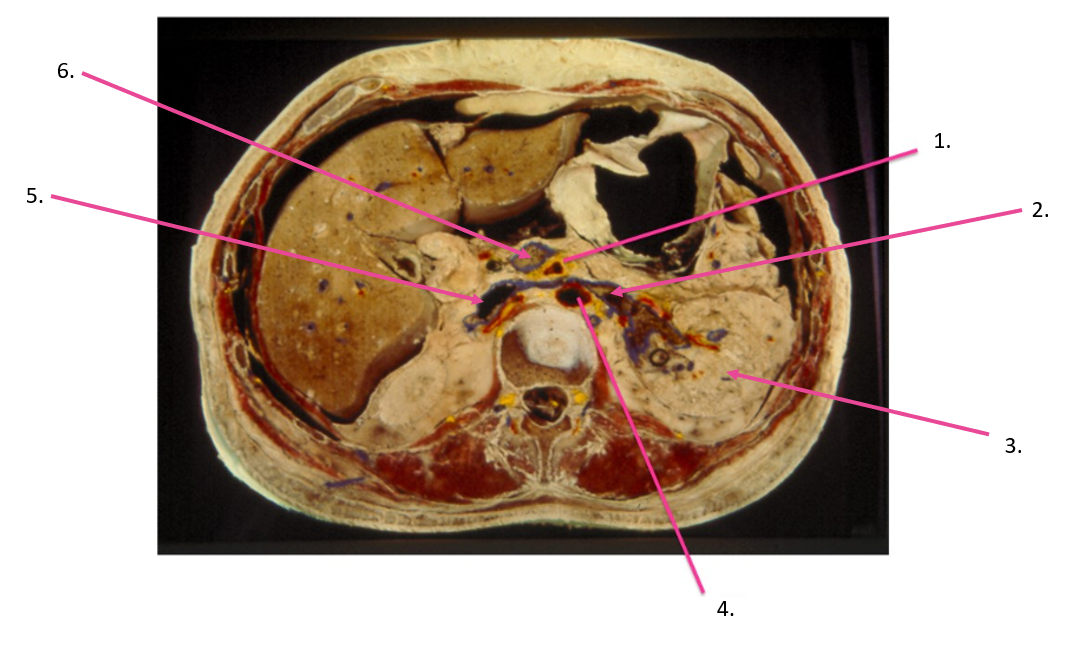
identify 1
SMA
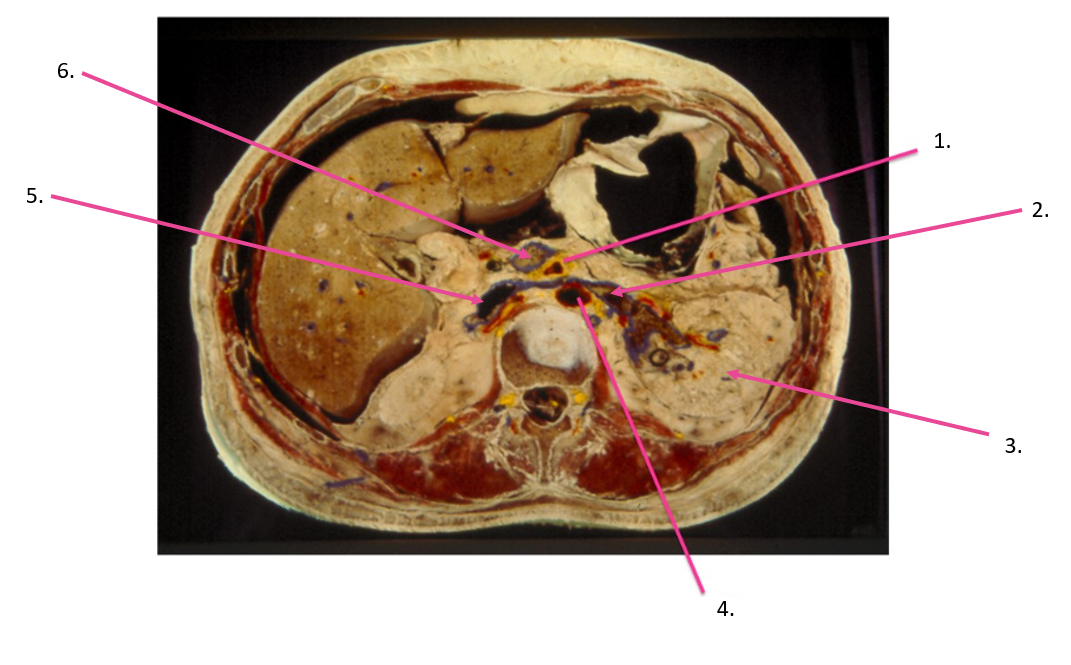
identify 2
Left renal vein
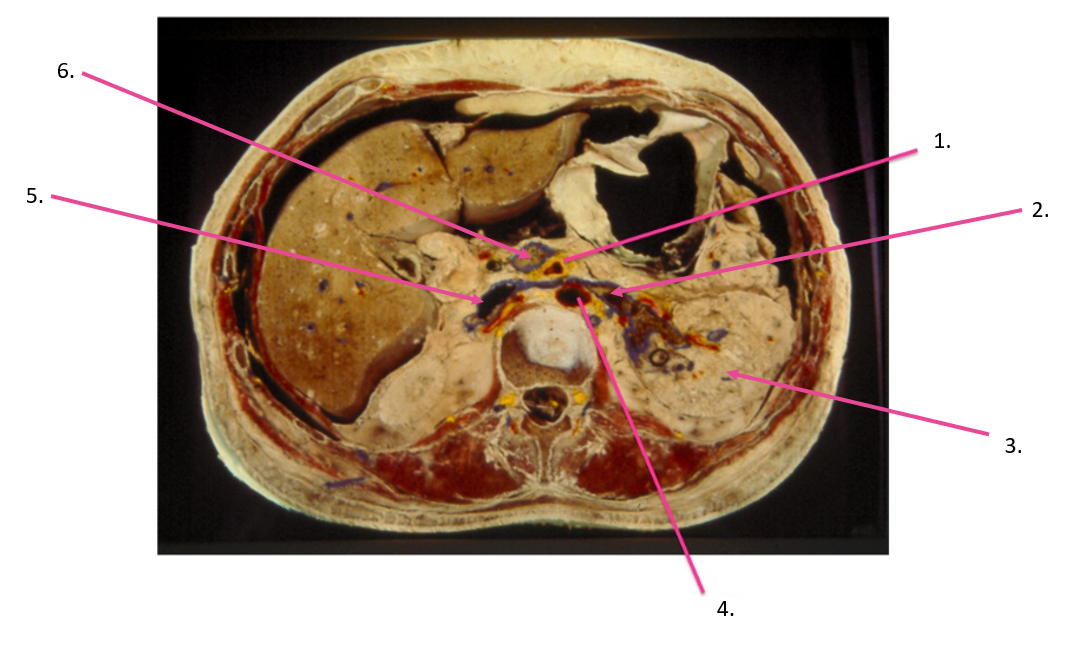
identify 3
left kidney
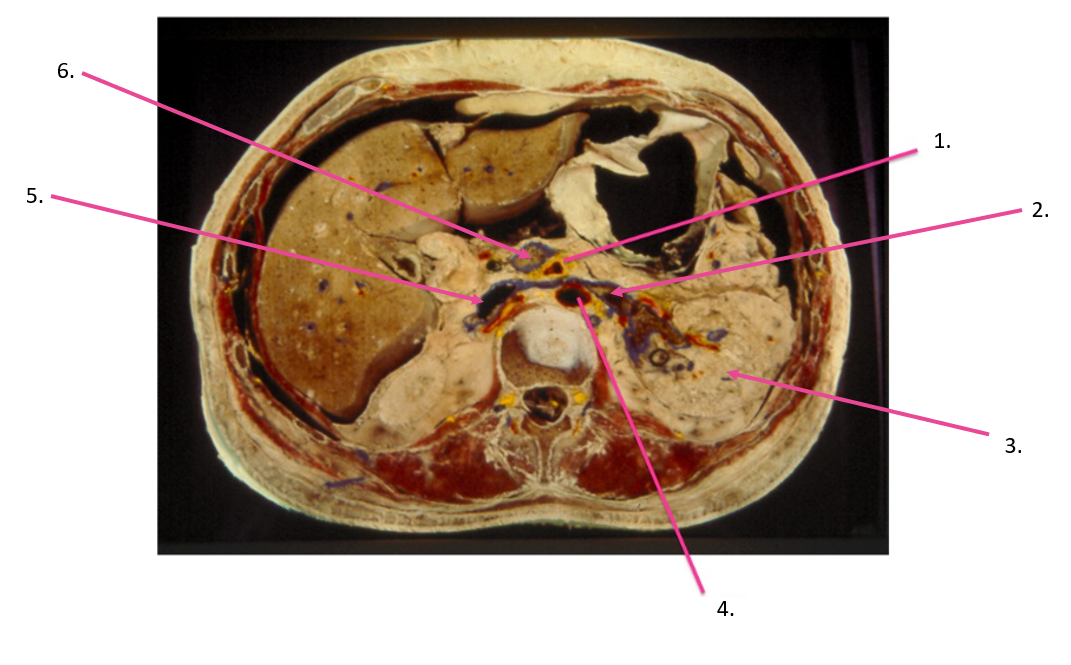
identify 4
aorta
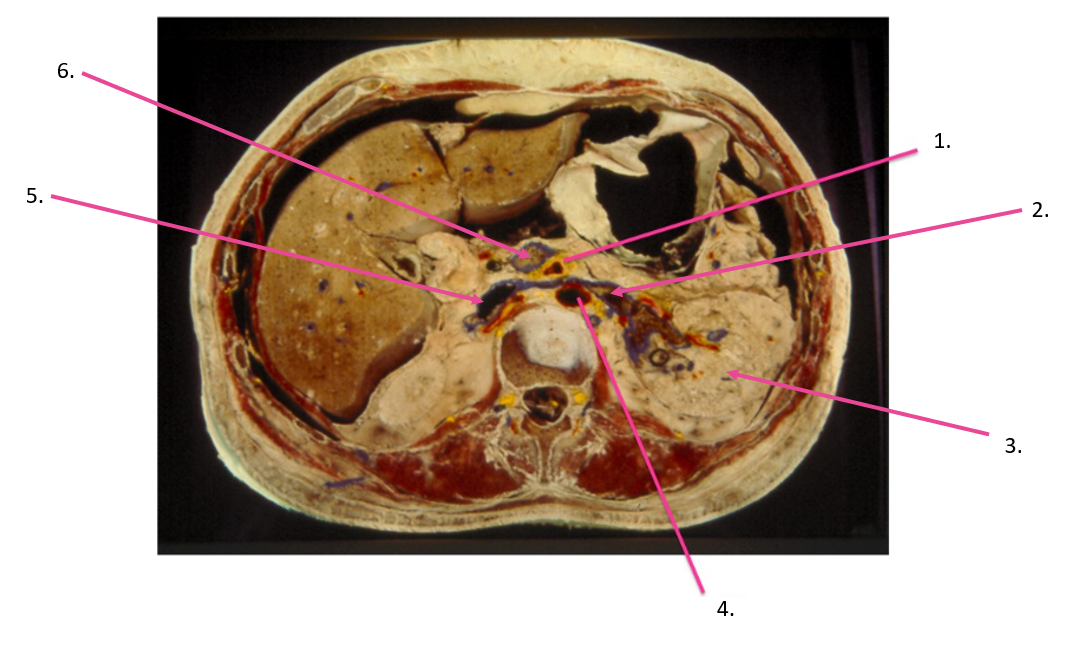
identify 5
IVC
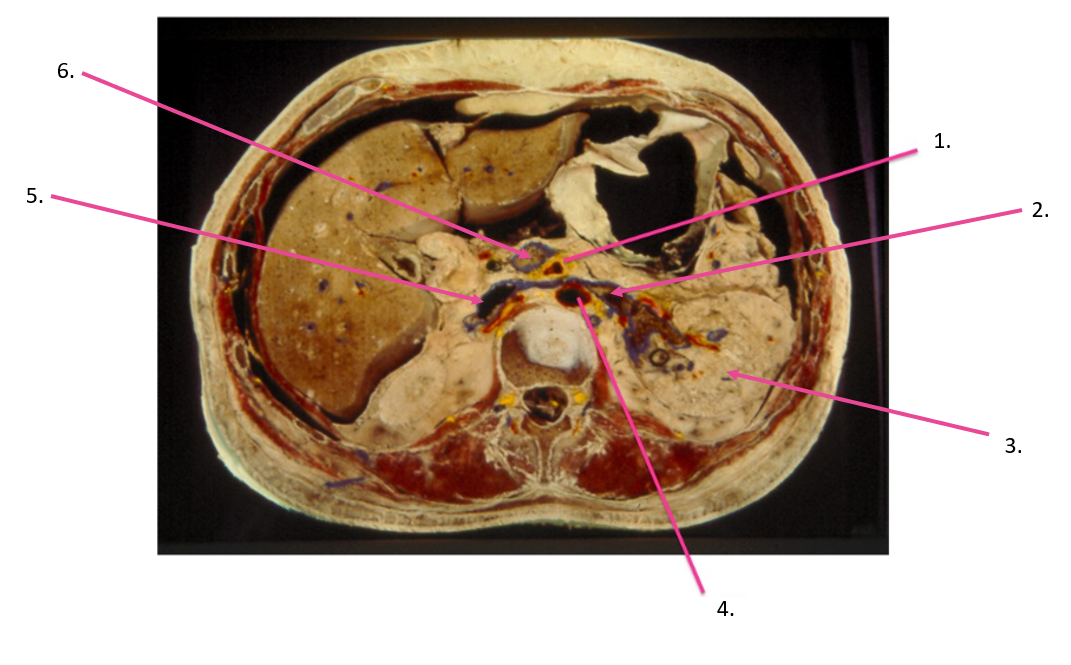
identify 6
Portal vein
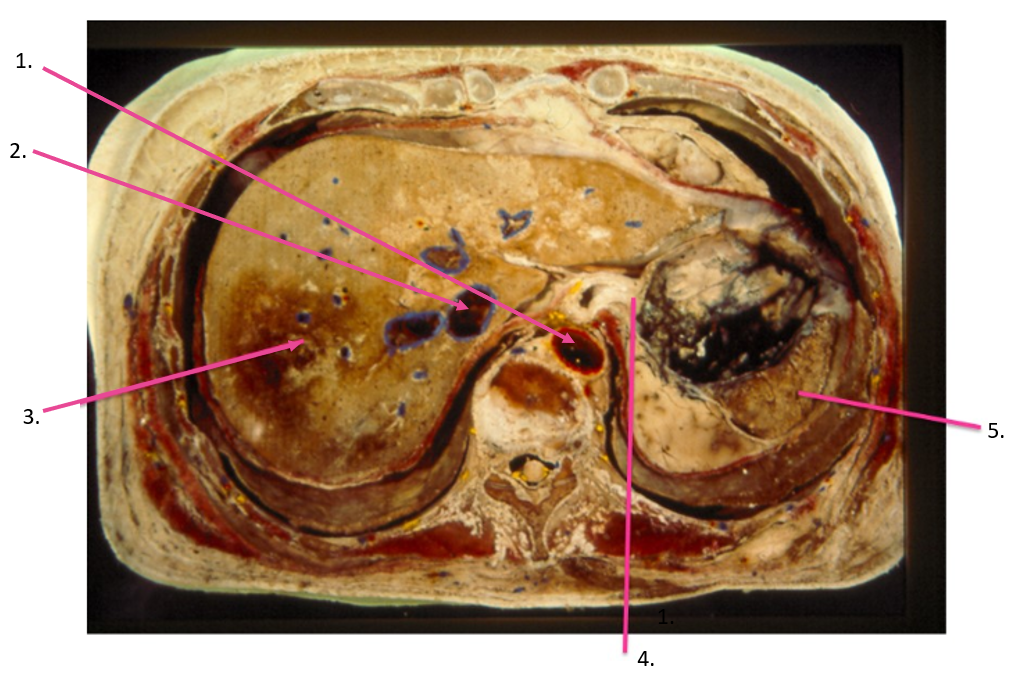
identify 1
aorta
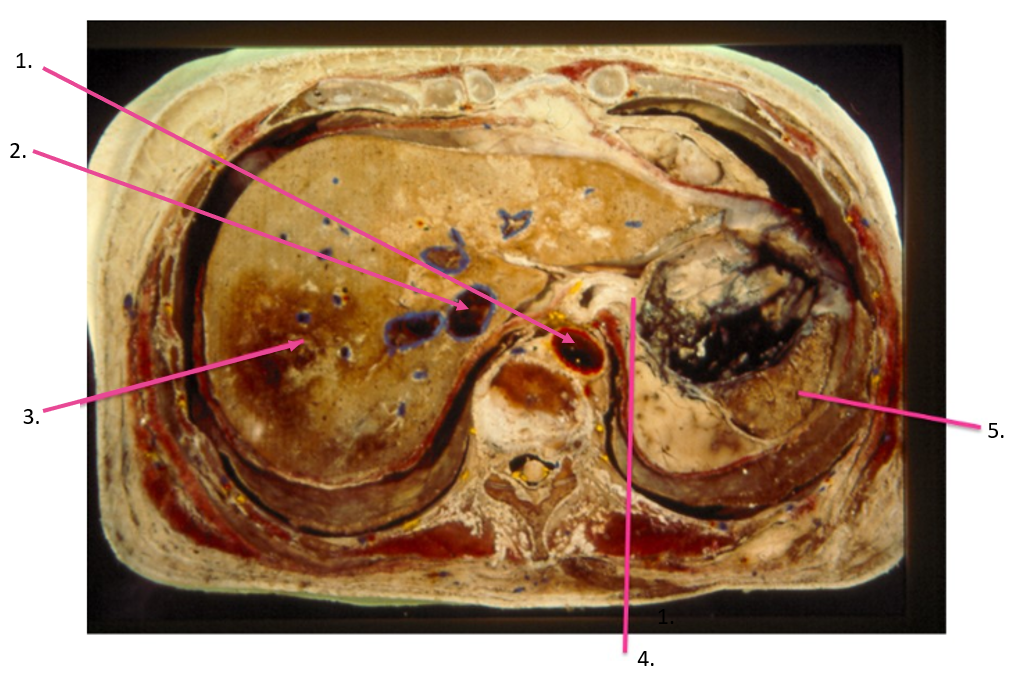
identify 2
IVC
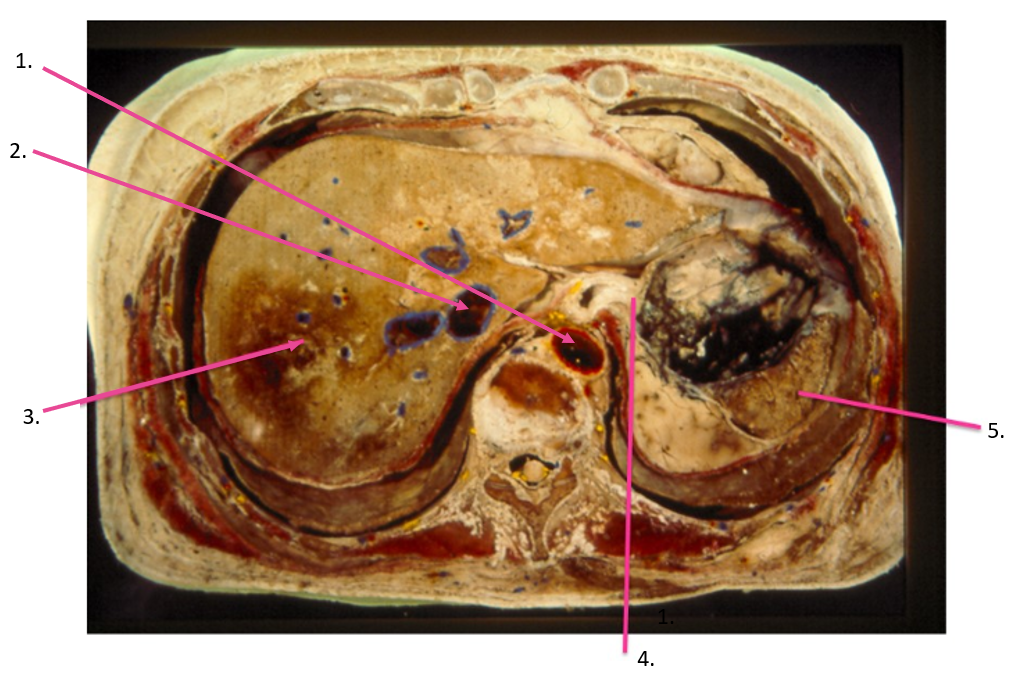
identify 3
right lobe of liver
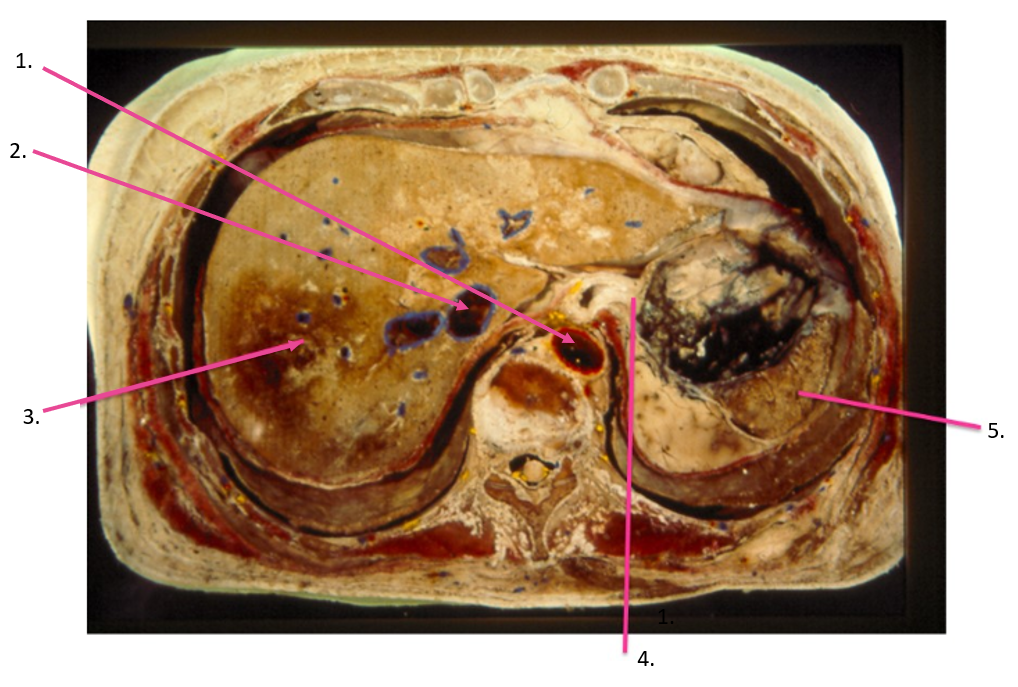
identify 4
gastroesophageal junction
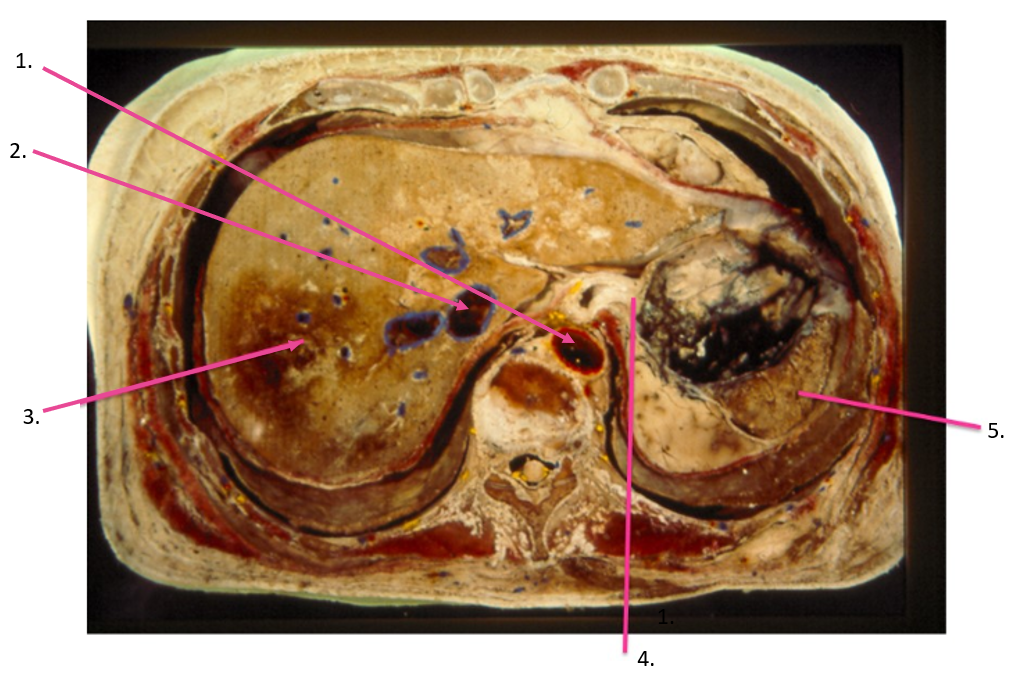
identify 5
spleen
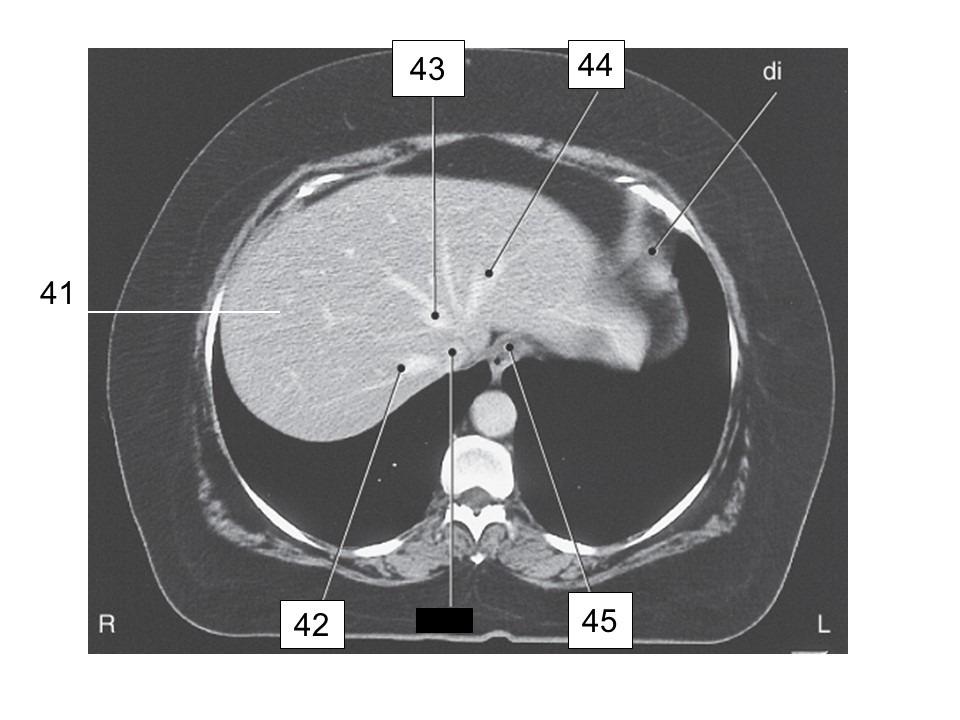
identify 41
right lobe of liver
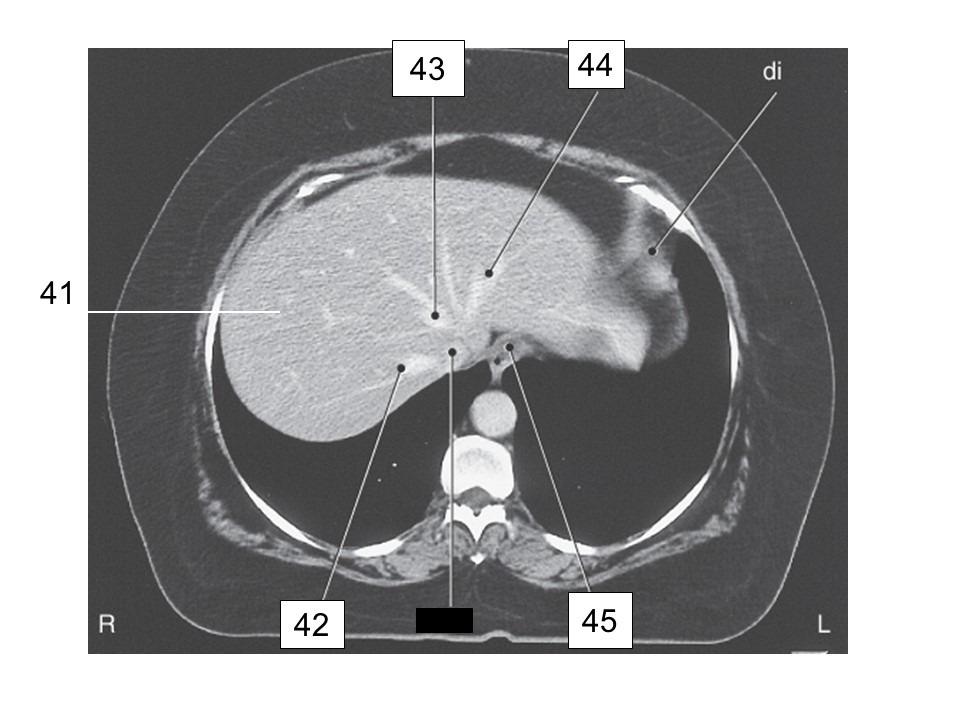
identify 42
right hepatic vein
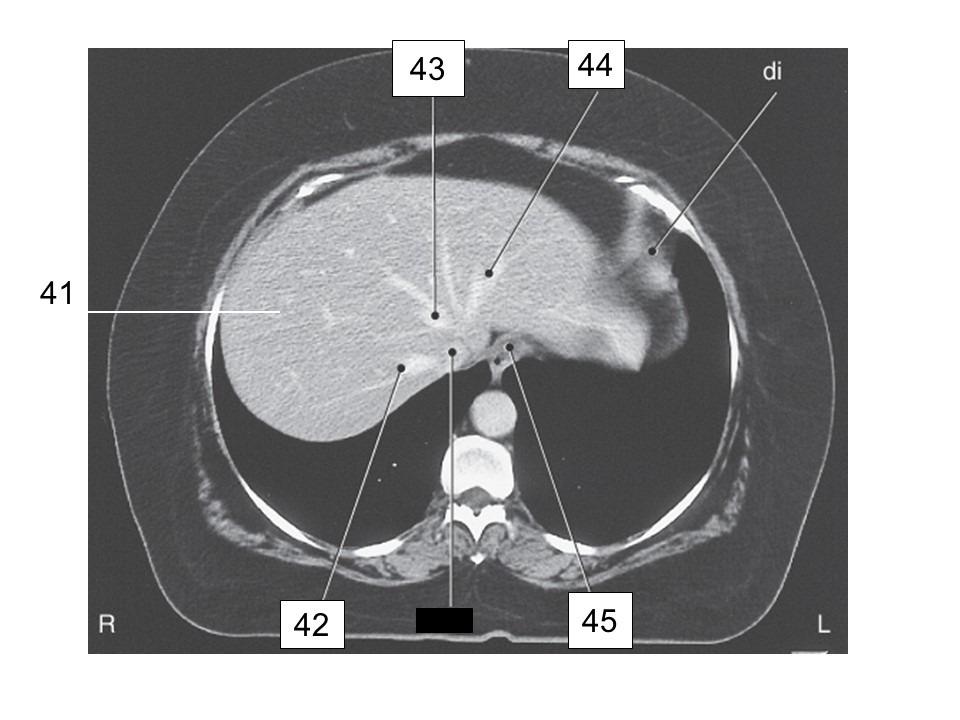
identify 43
middle hepatic vein
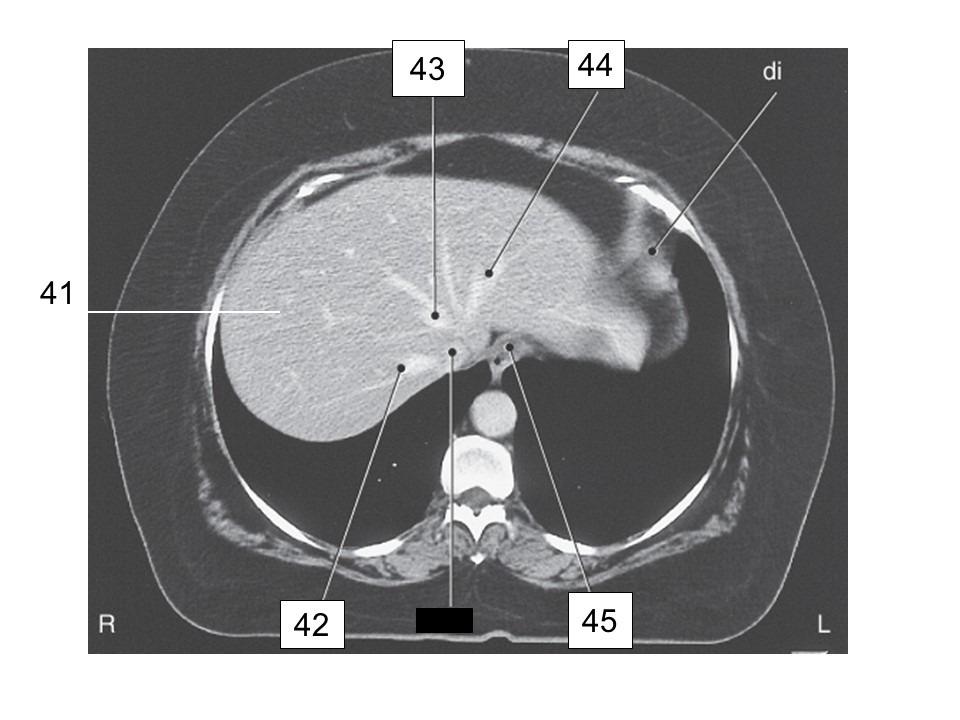
identify 44
left hepatic vein
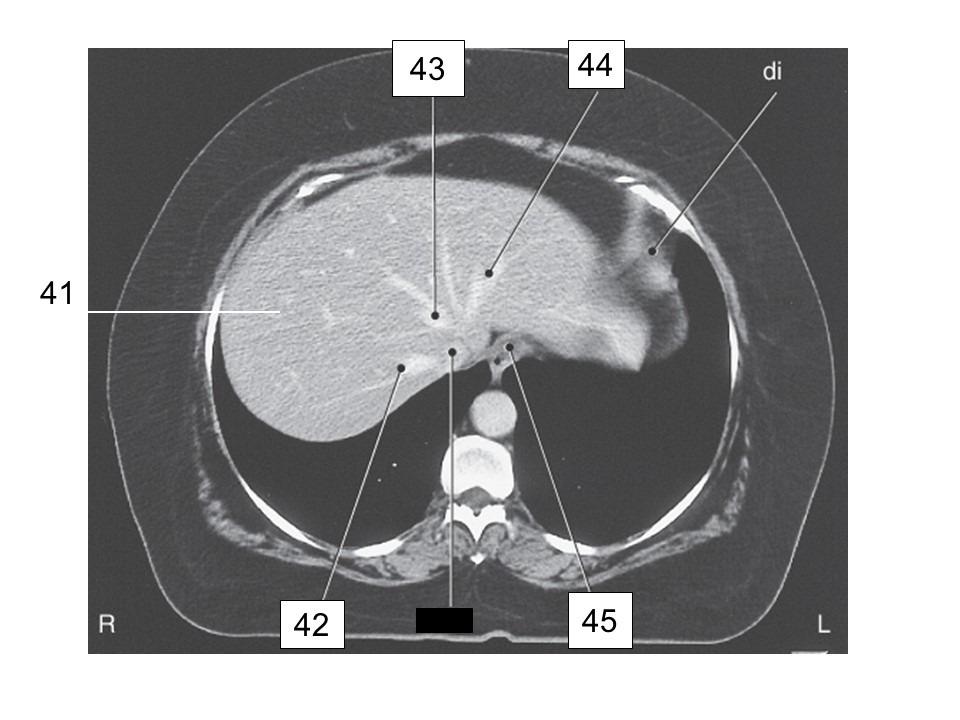
identify 45
esophagus
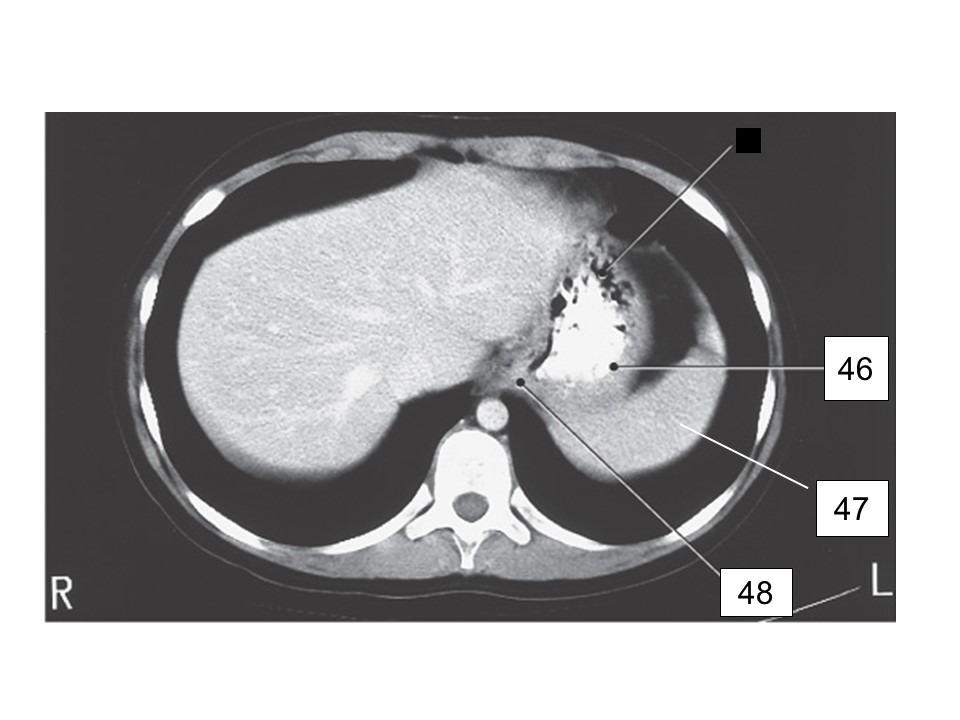
identify 46
stomach (fundus)
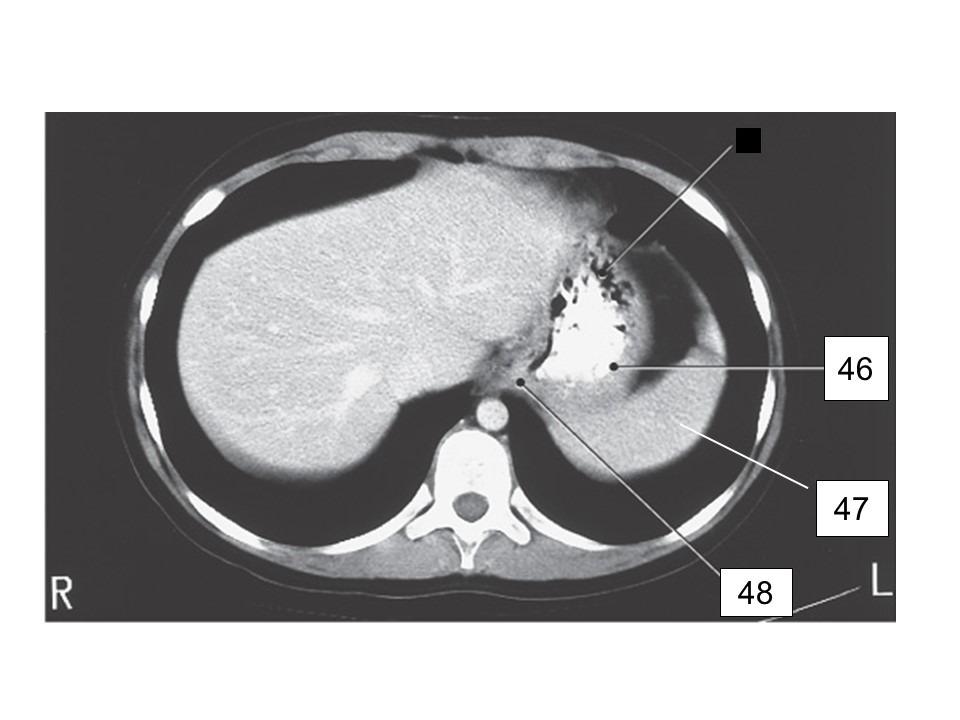
identify 47
spleen
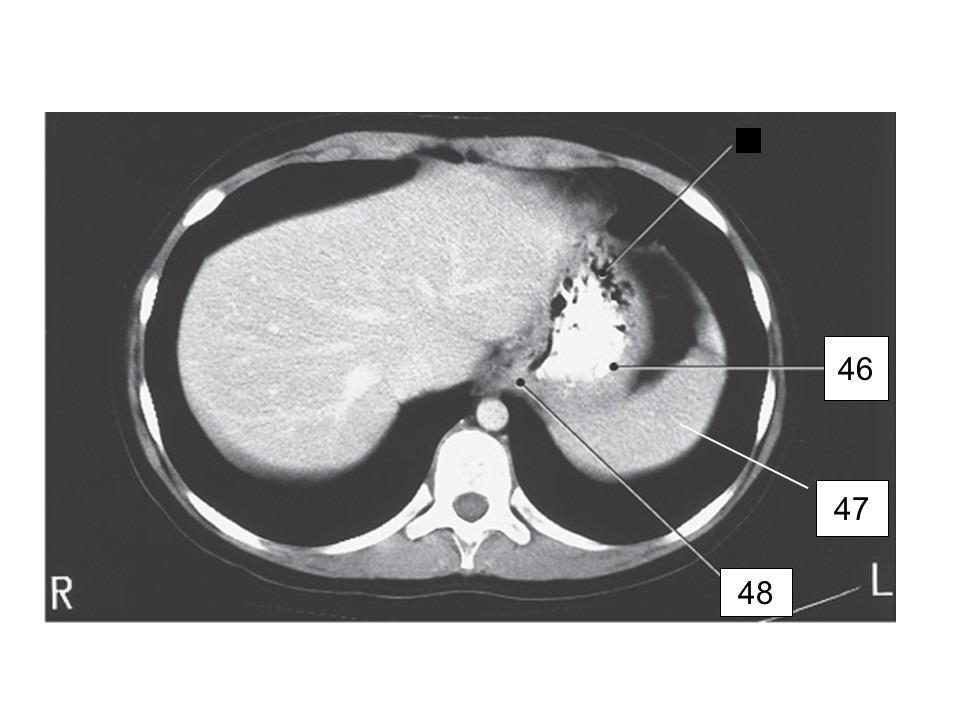
identify 48
gastroesophageal junction
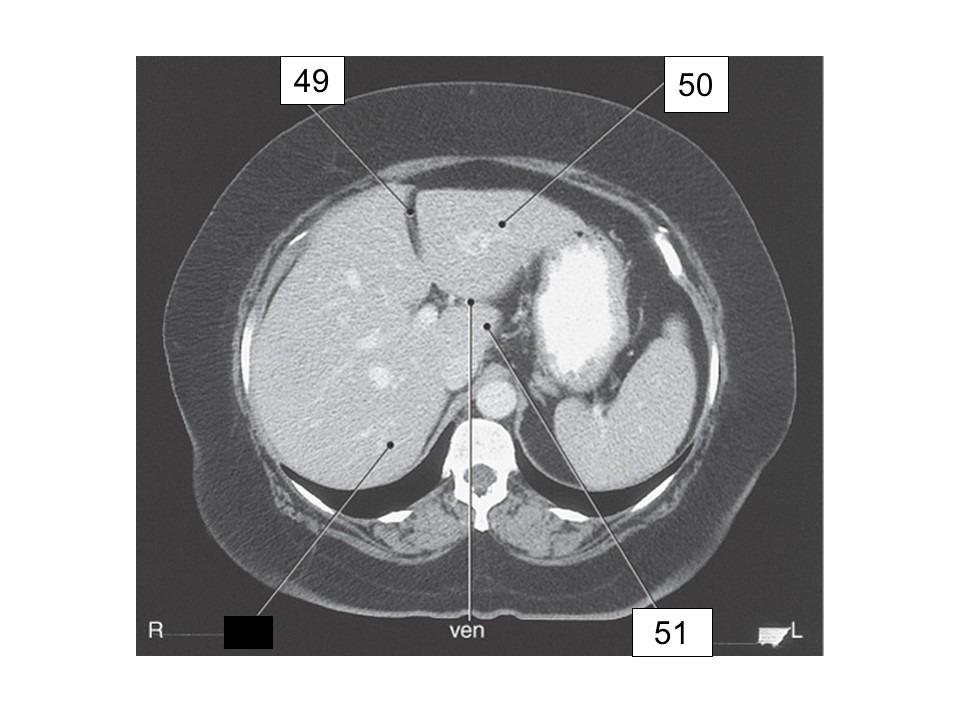
identify 49
falciform ligament
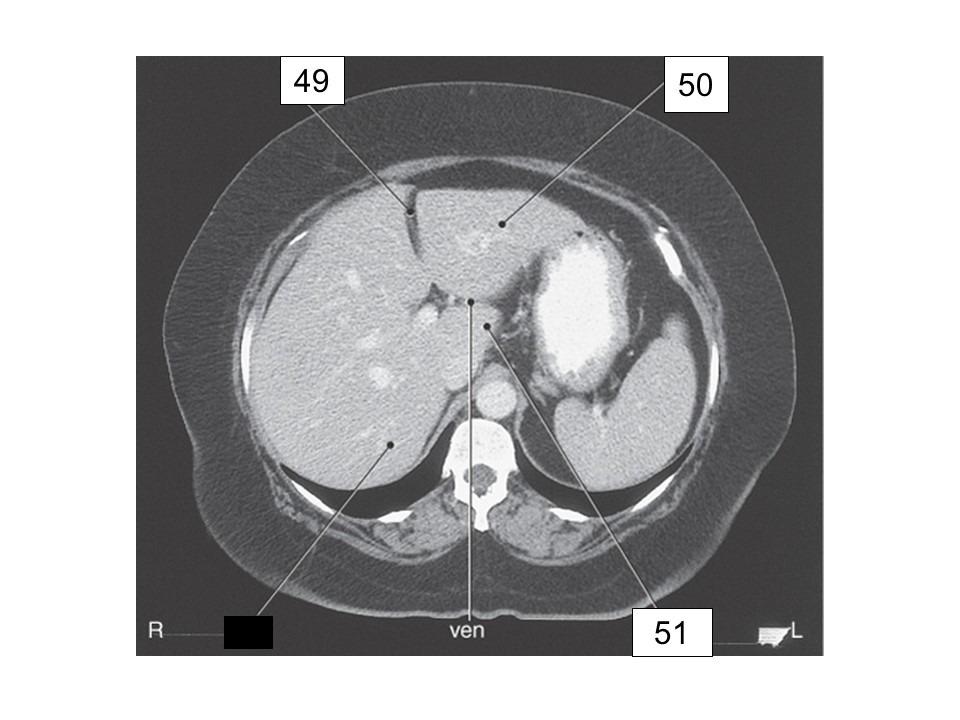
identify 50
left lobe of liver
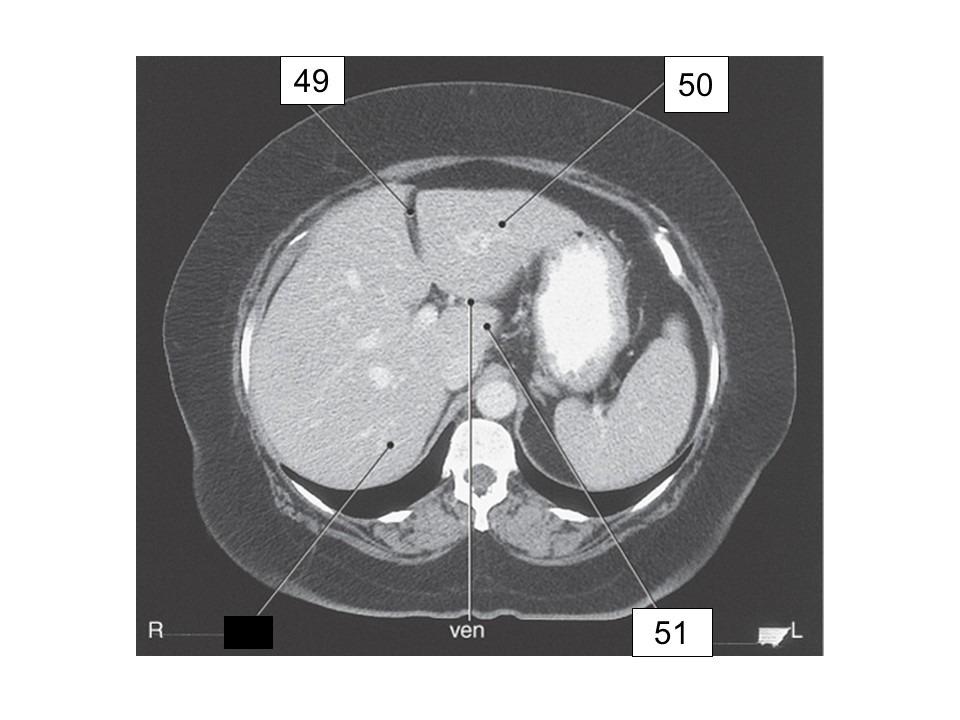
identify 51
caudate lobe of liver
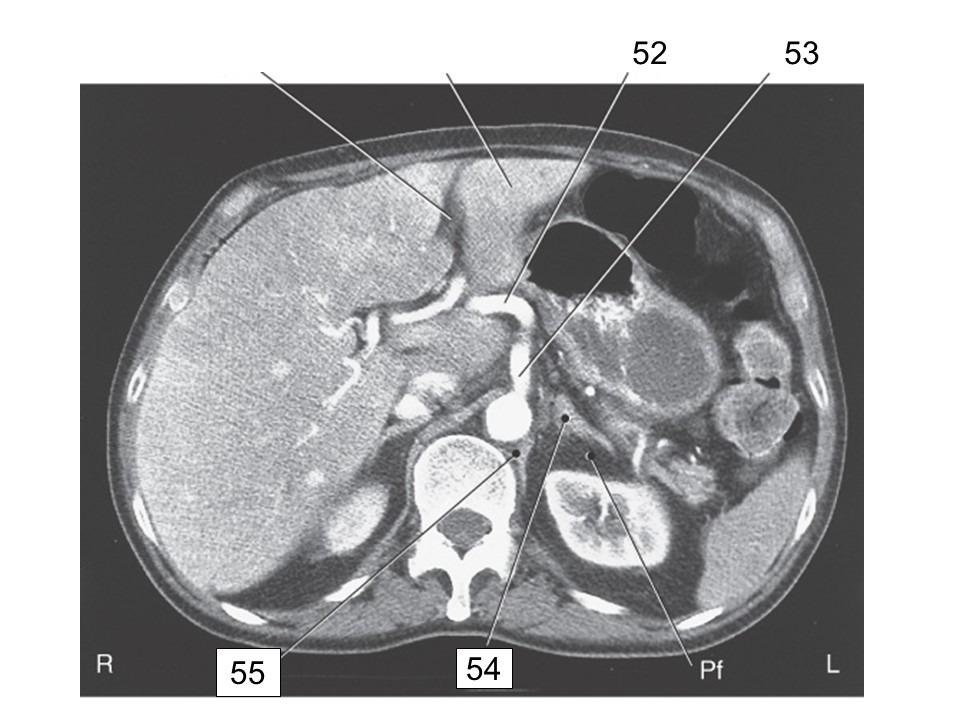
identify 52
hepatic artery
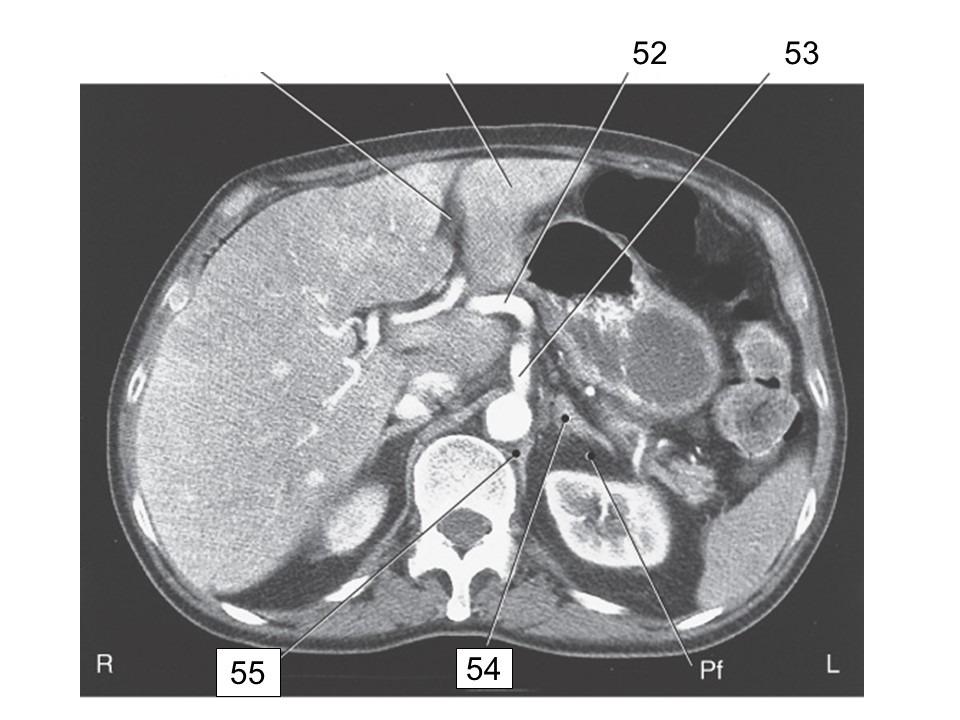
identify 53
celiac trunk
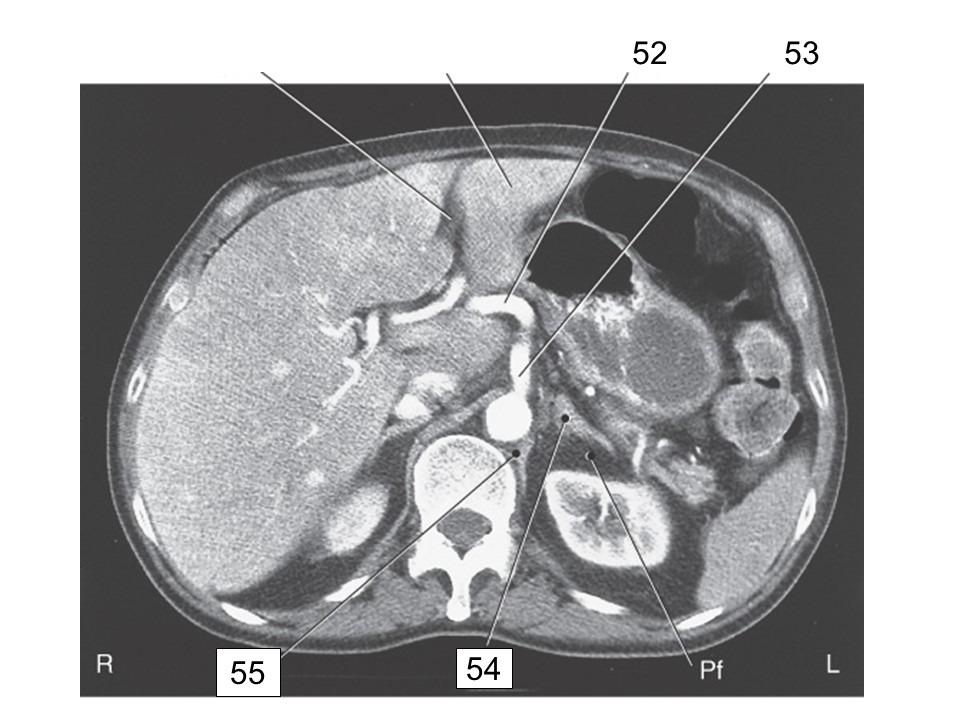
identify 54
left adrenal gland
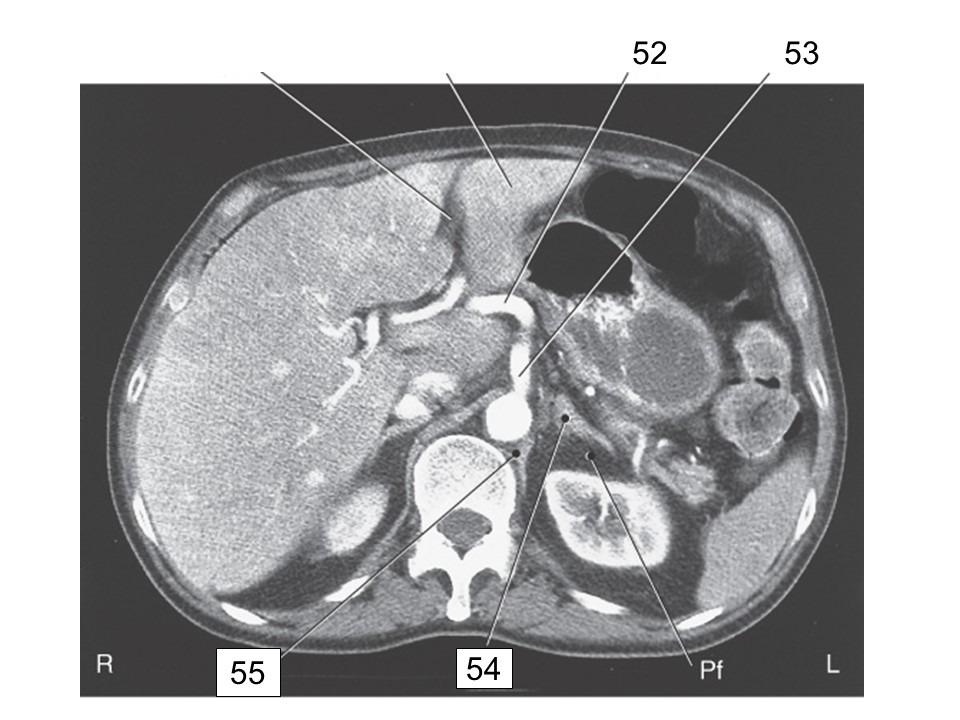
identify 55
left crus of diaphragm
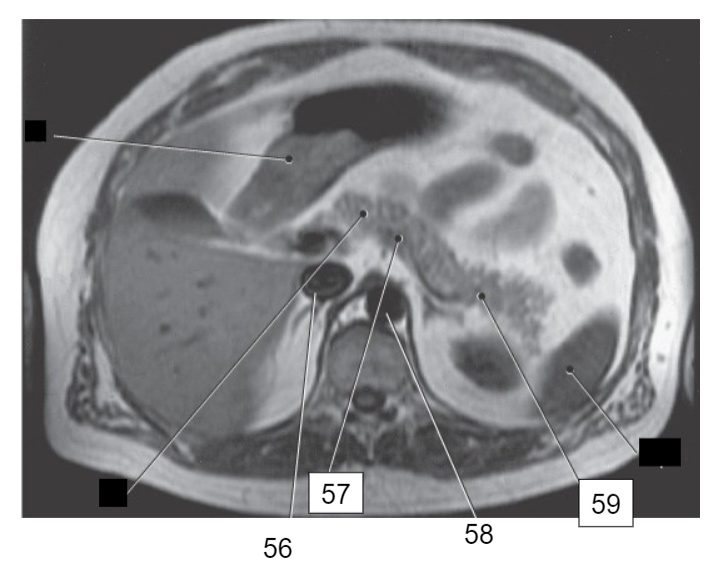
identify 56
IVC
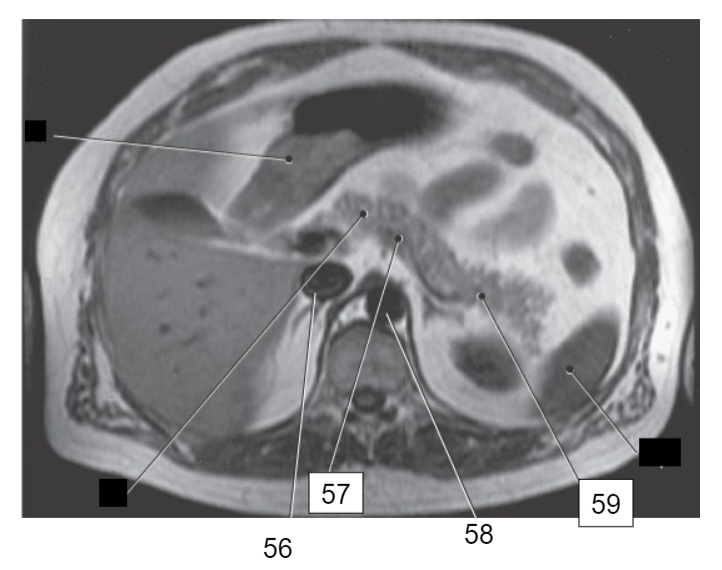
identify 57
body of pancreas
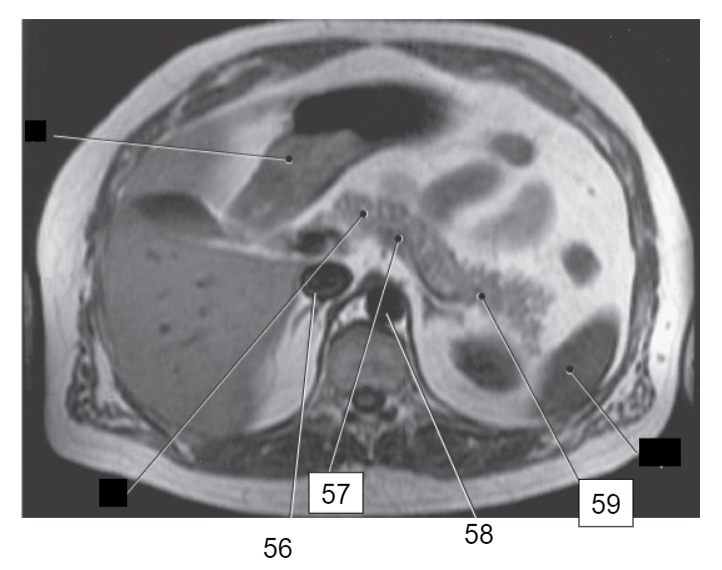
identify 58
aorta
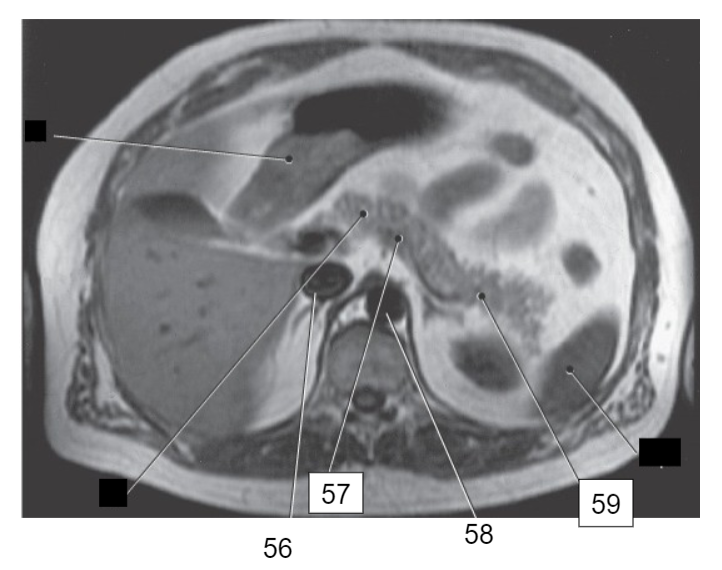
identify 59
tail of pancreas
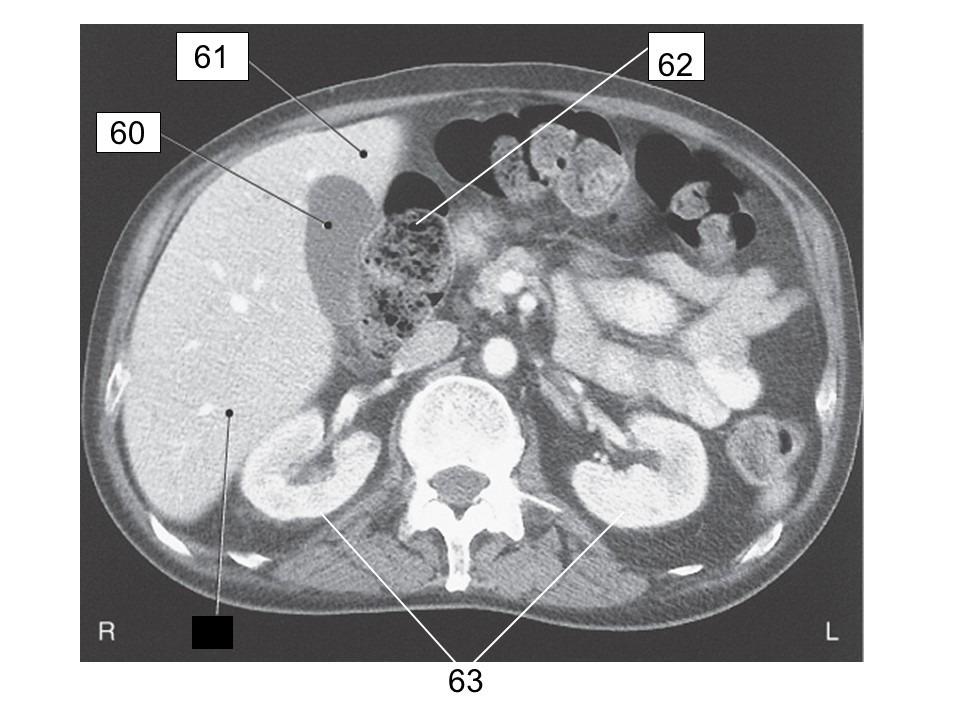
identify 60
gallbladder
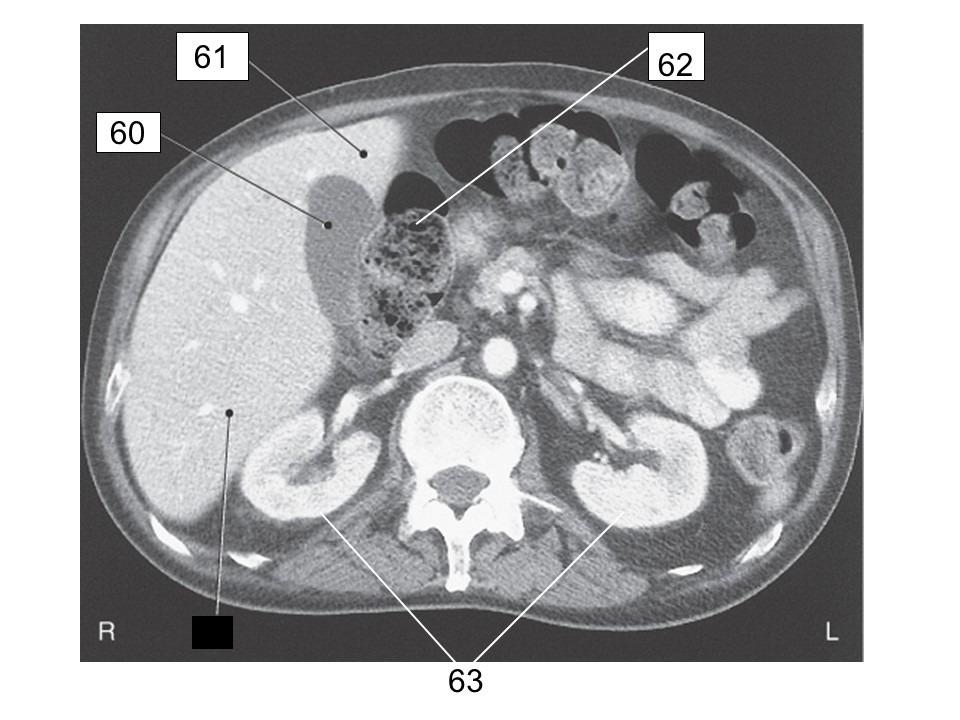
identify 61
quadrate lobe
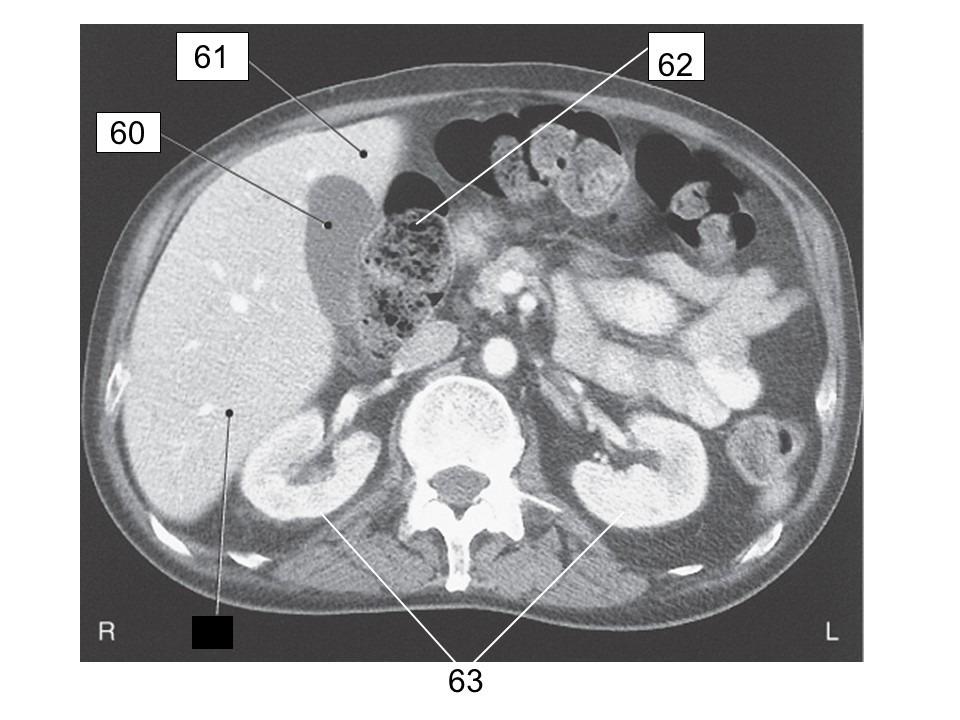
identify 62
duodenum
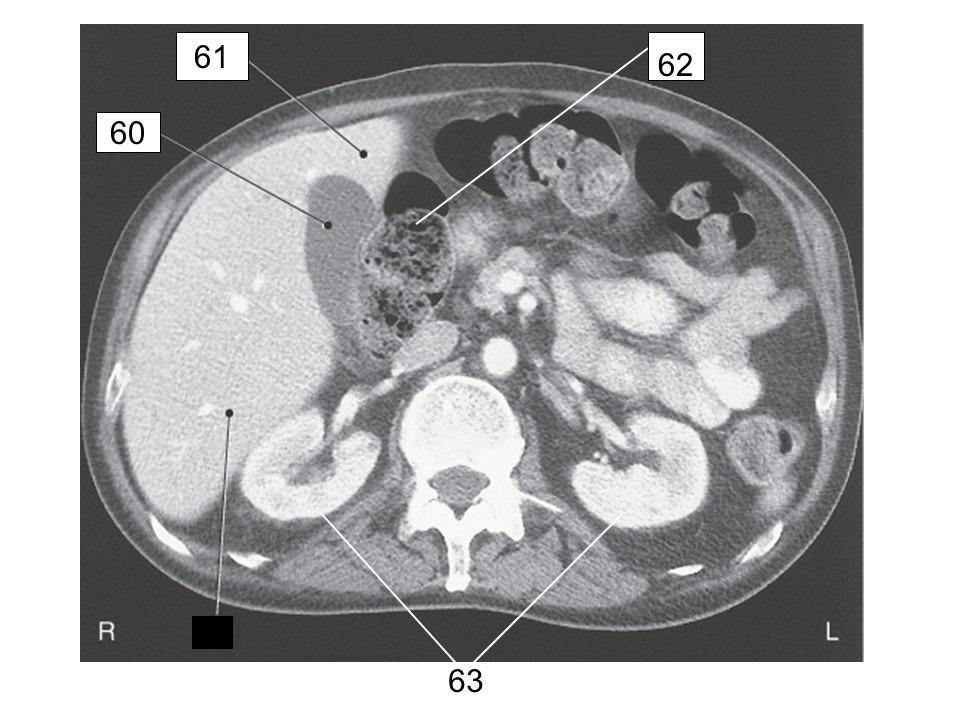
identify 63
kidneys
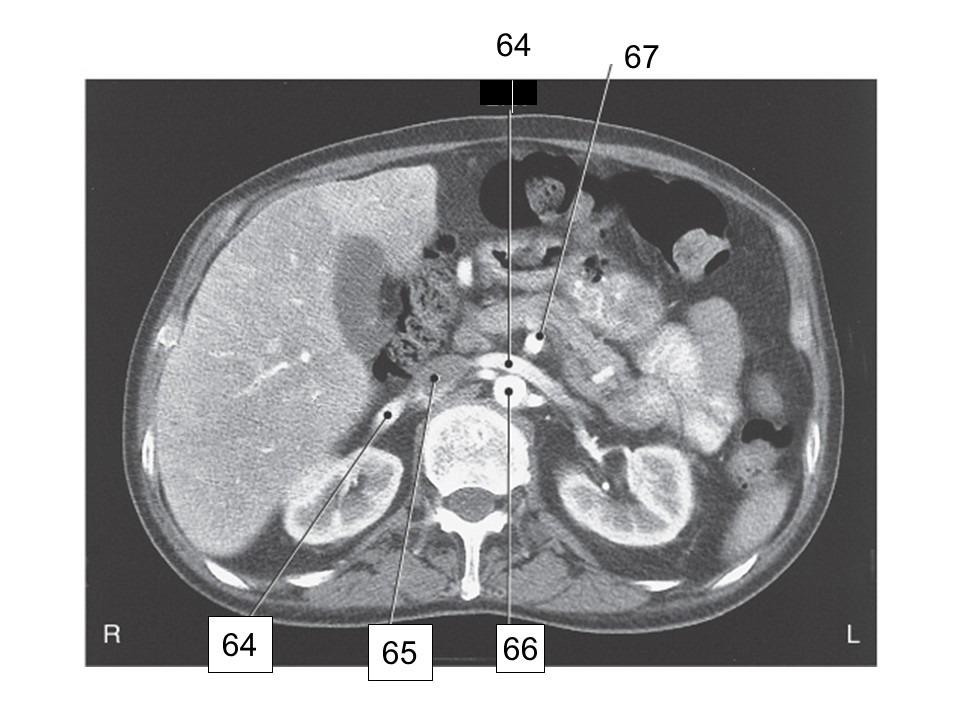
64
renal veins
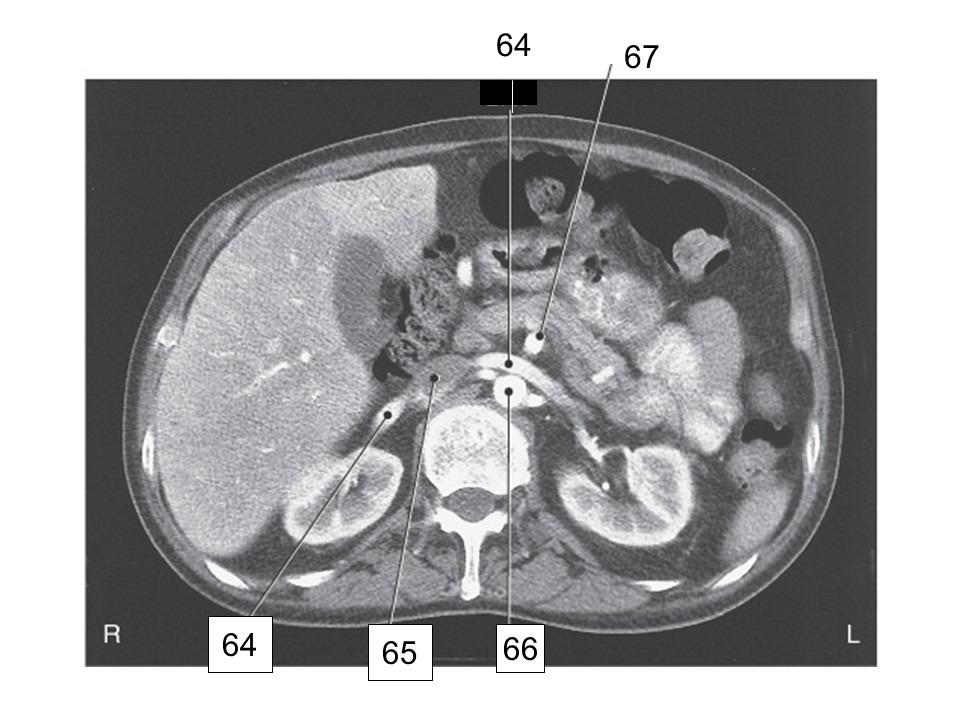
65
IVC
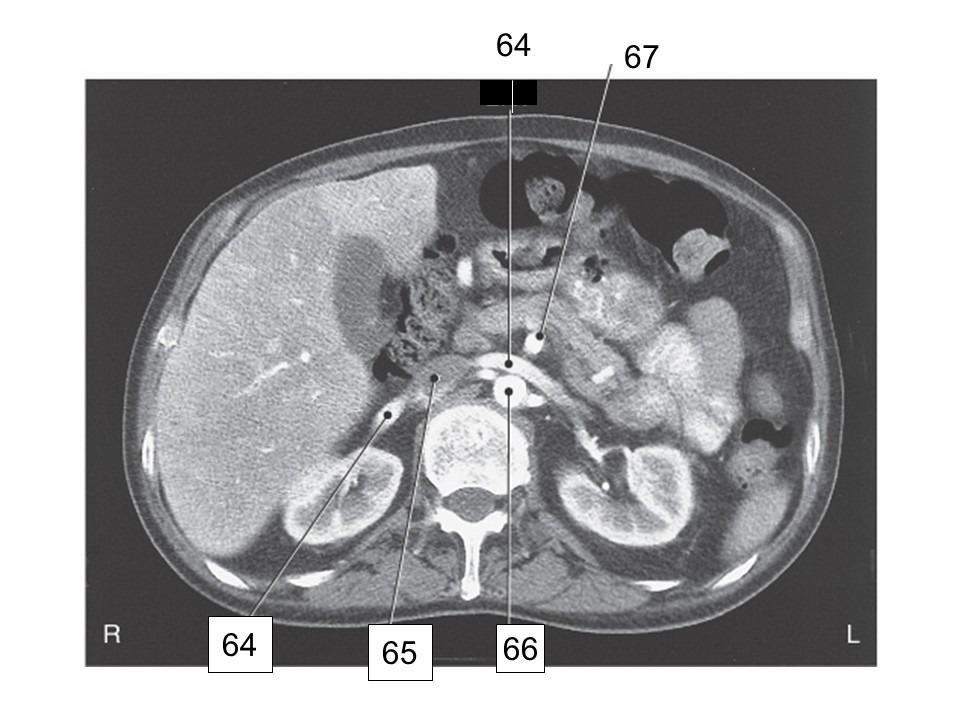
66
aorta
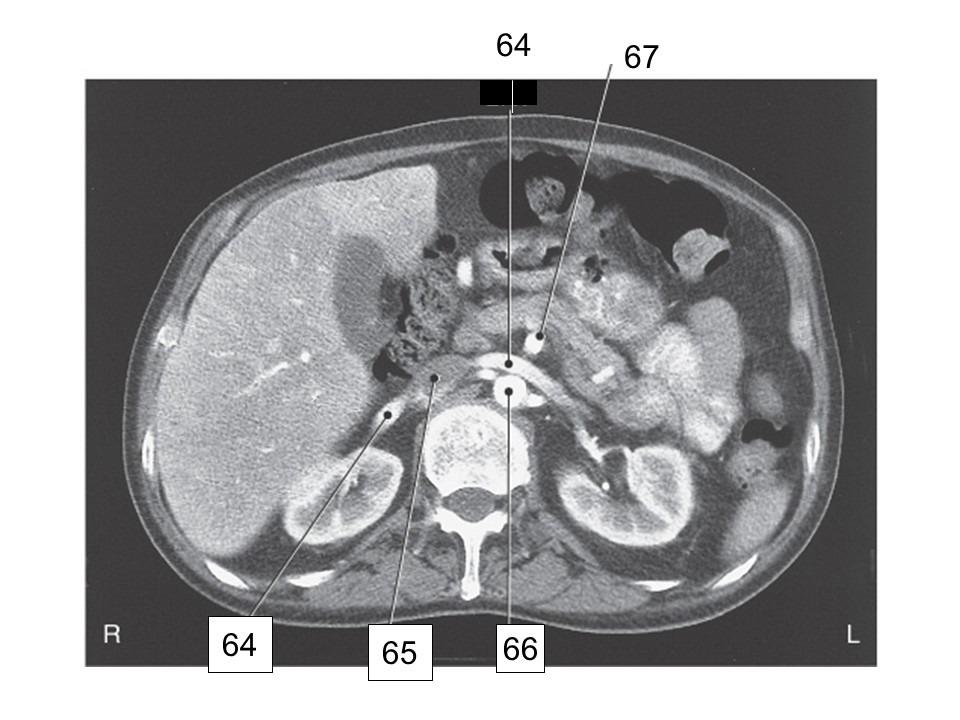
67
SMA
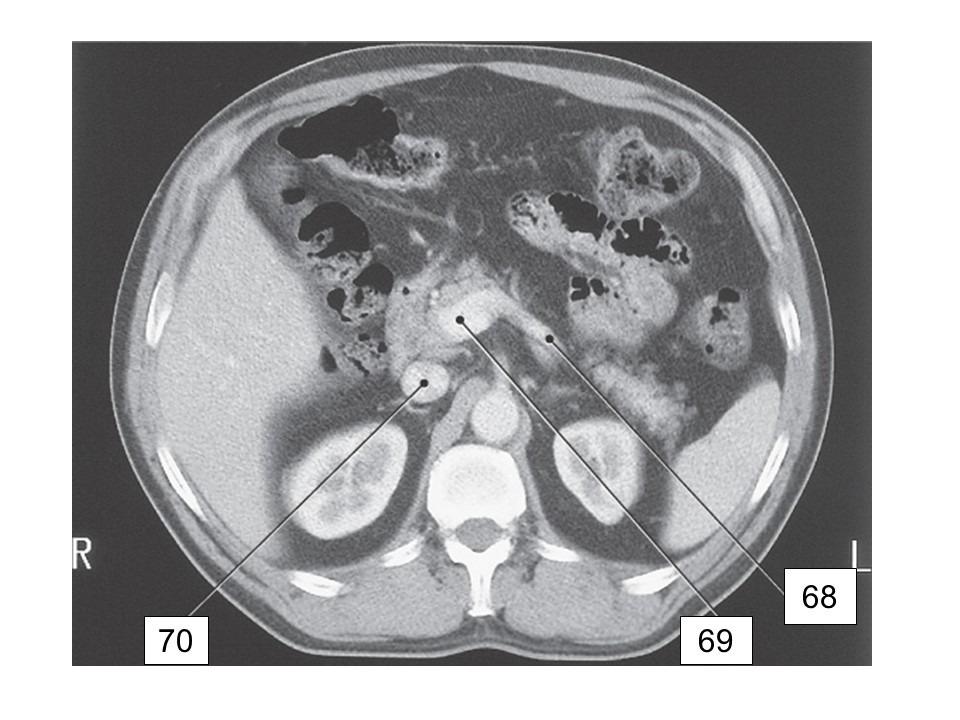
68
splenic vein

69
portal vein
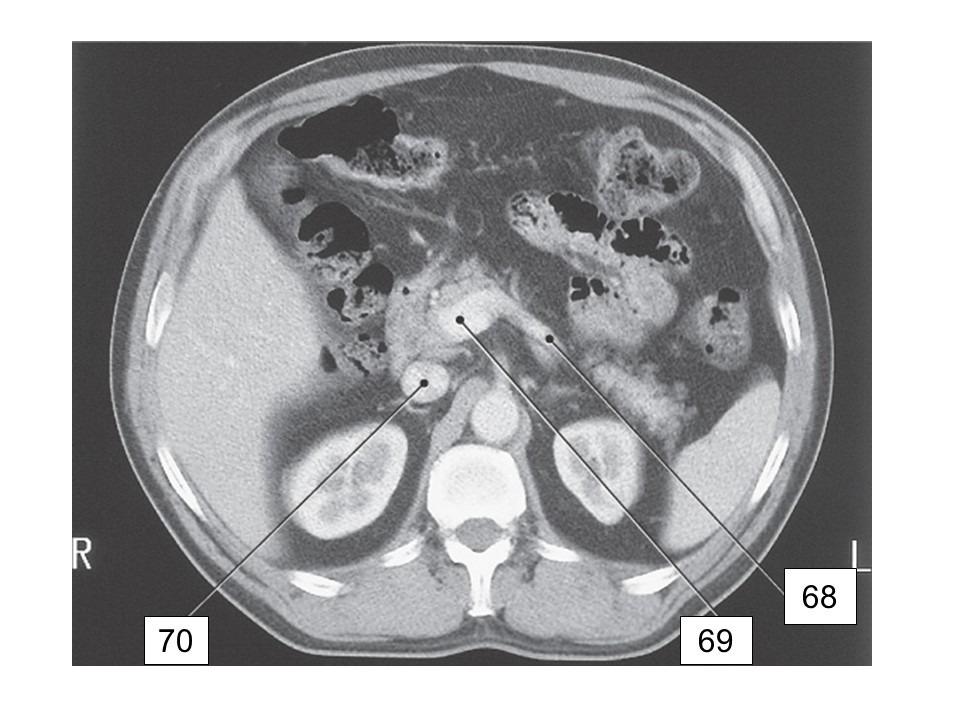
70
IVC
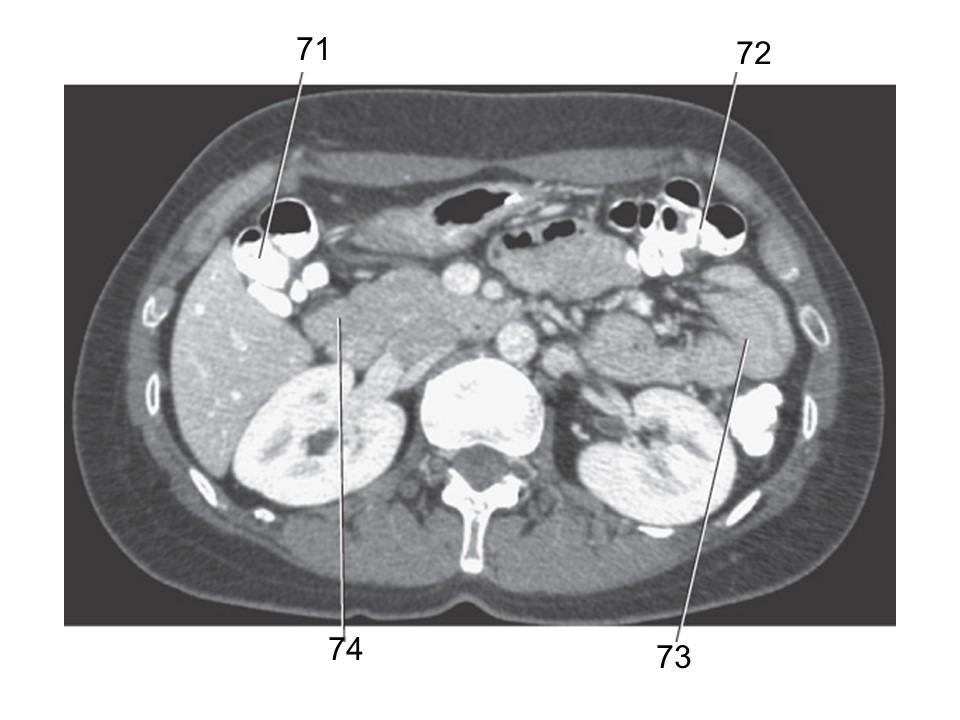
71
hepatic flexure (ascending colon)
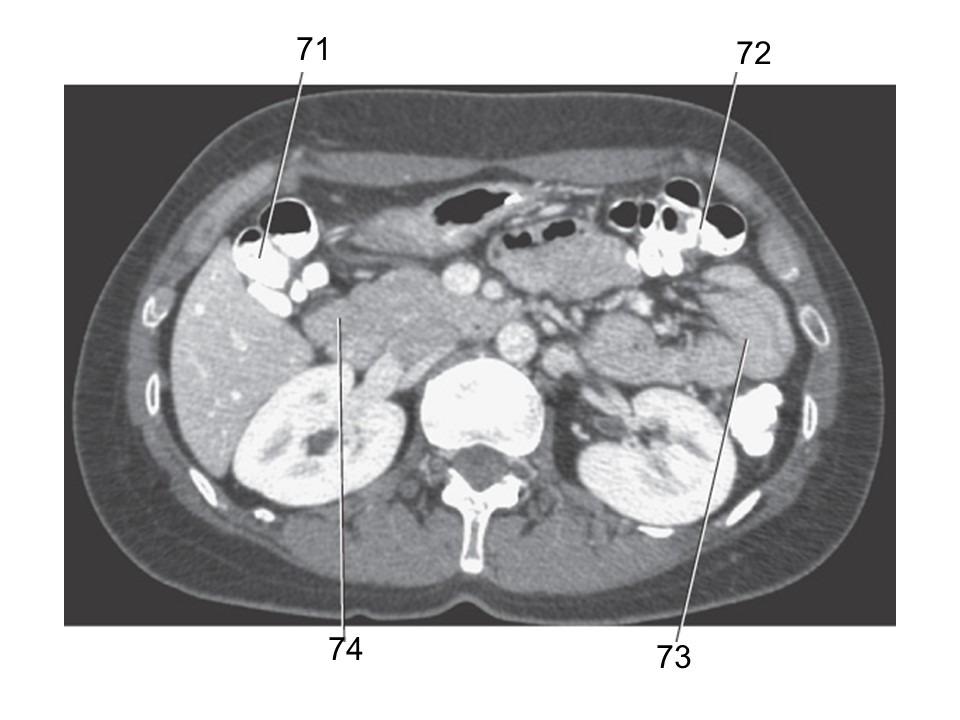
72
splenic flexure (descending colon)
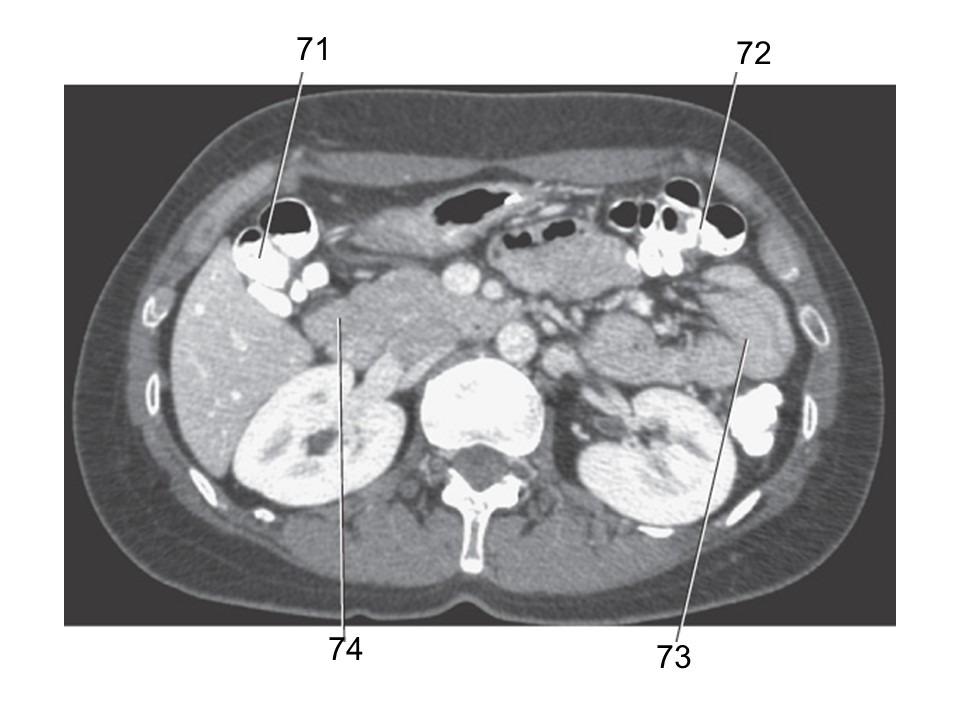
73
jejunum
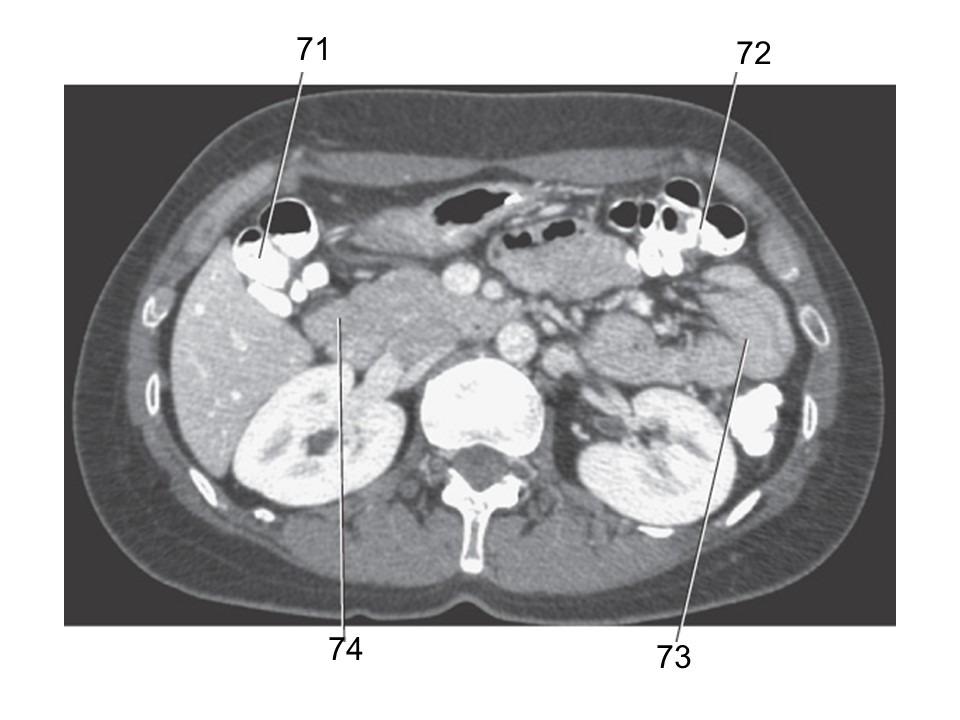
74
duodenum
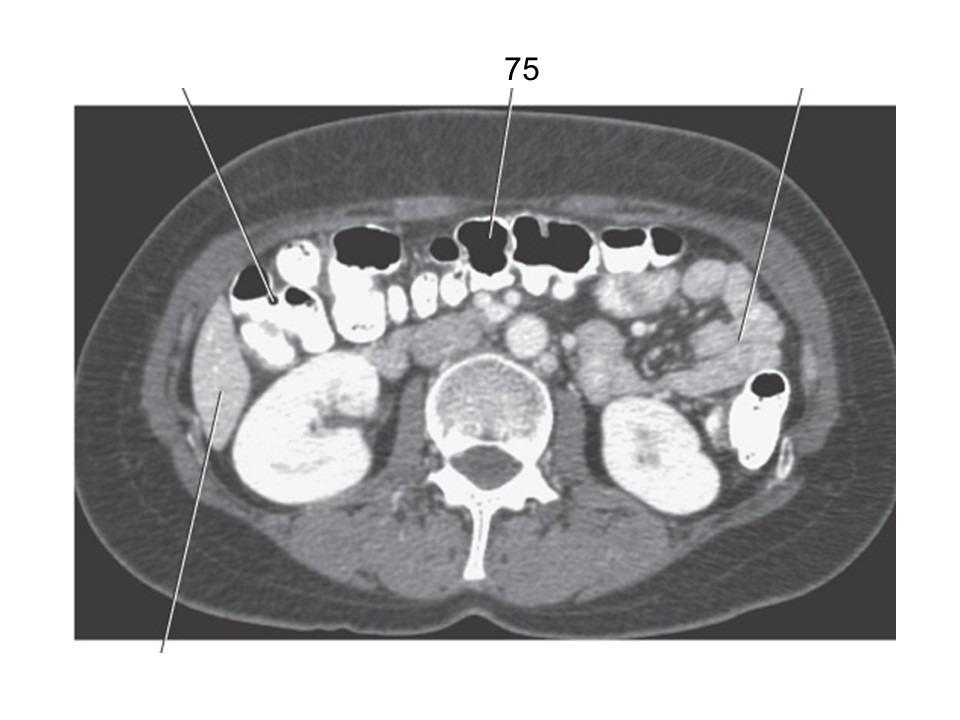
75
transverse colon
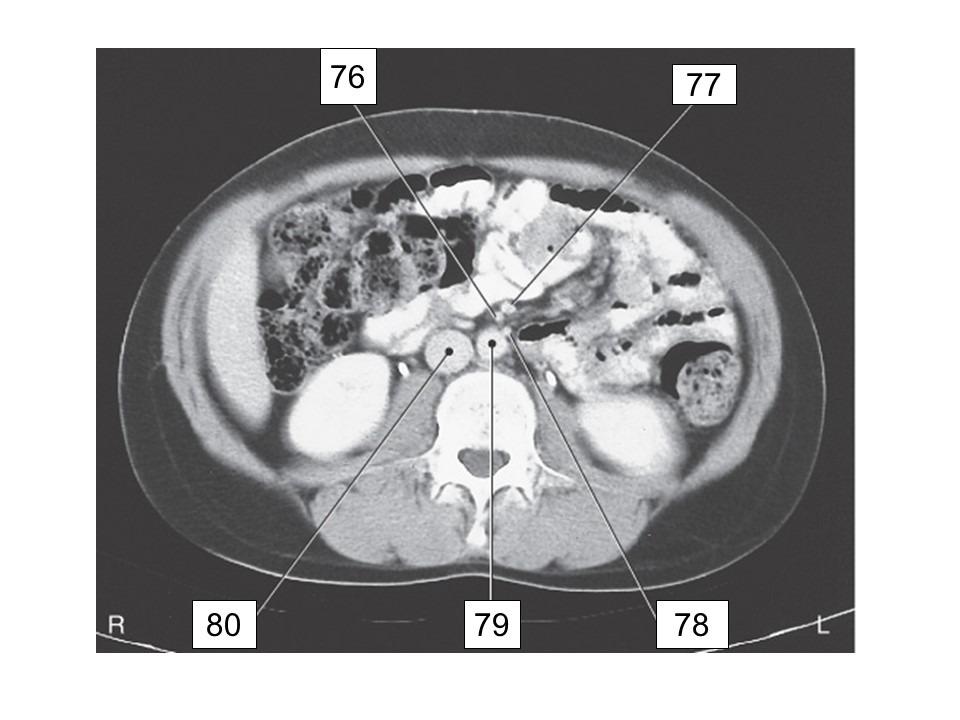
76
SMA
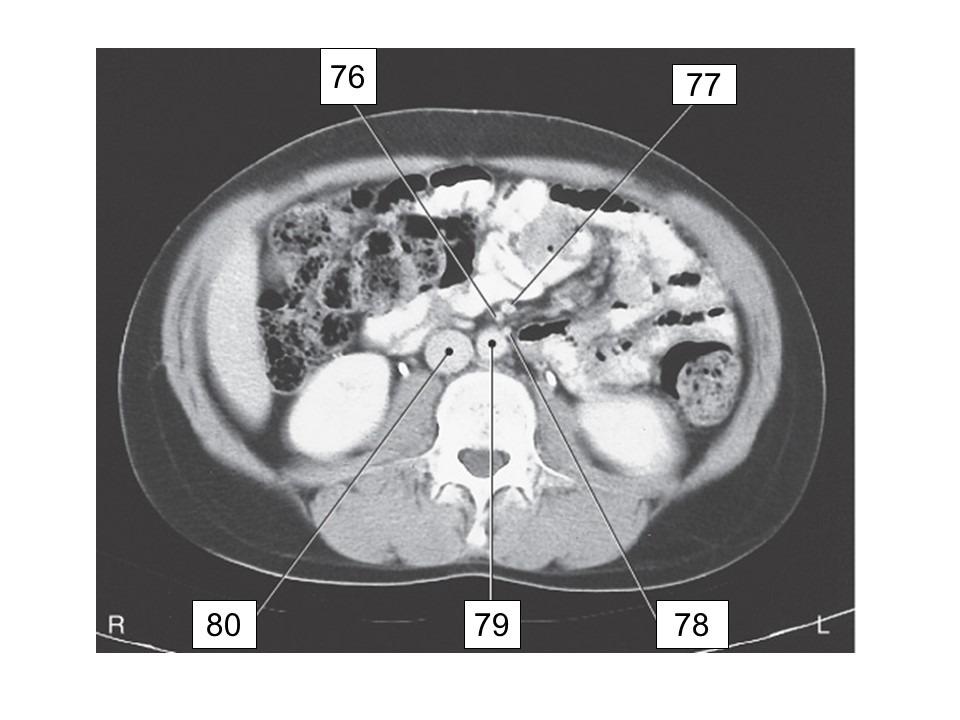
77
SMV
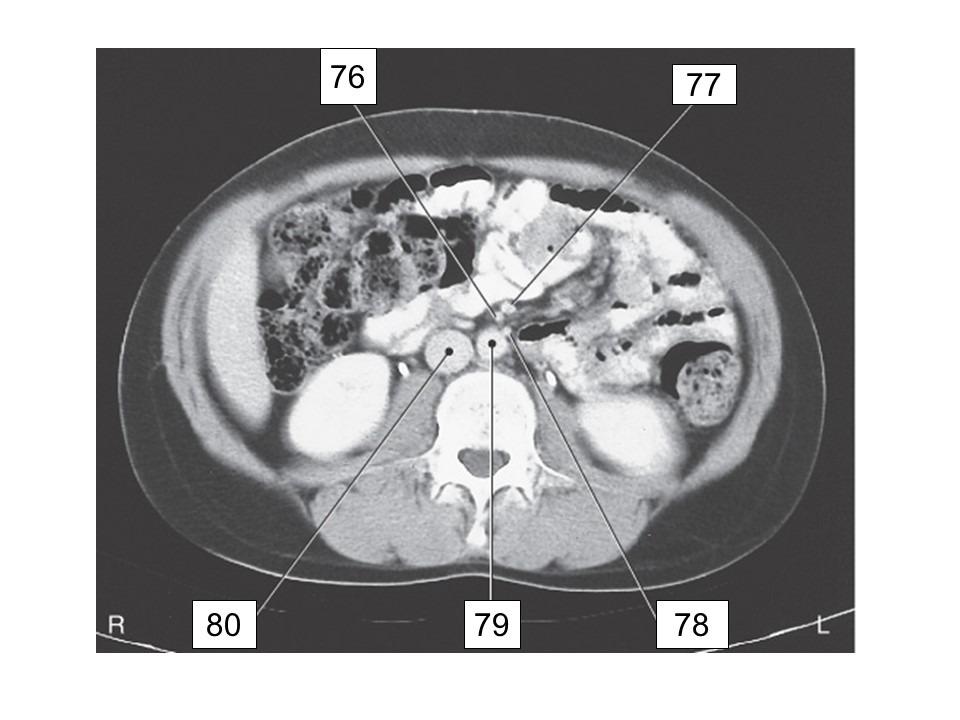
78
IMA
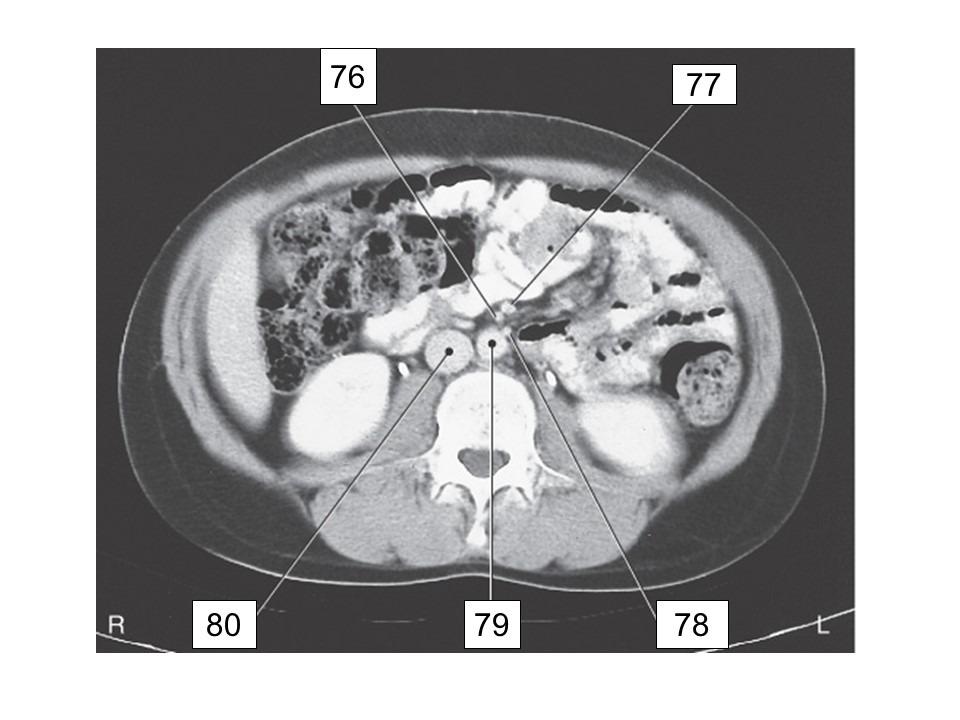
79
aorta
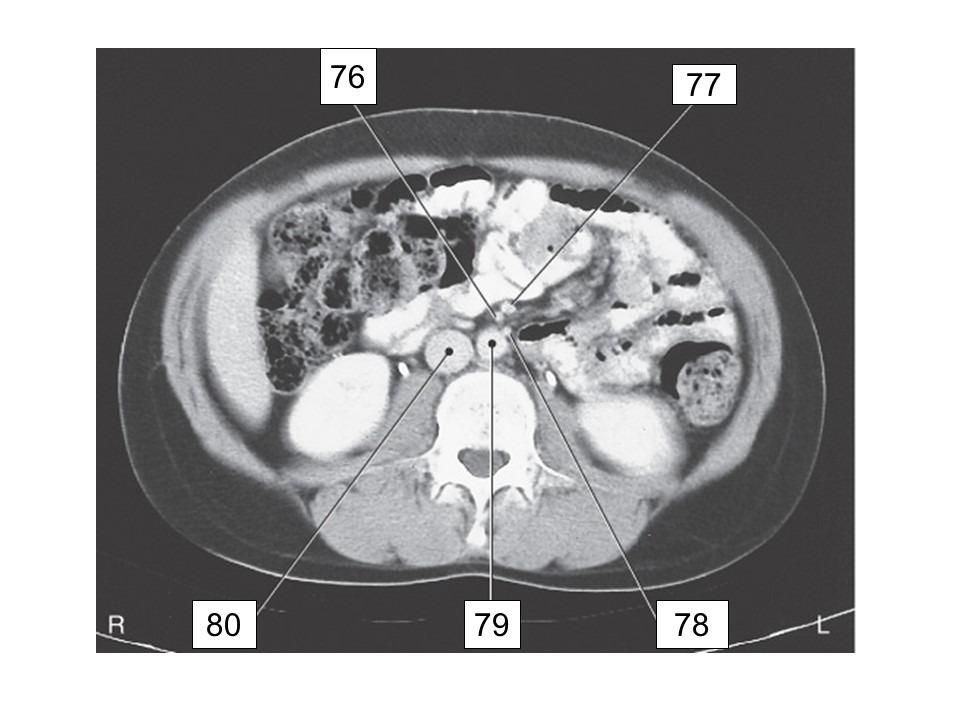
80
IVC
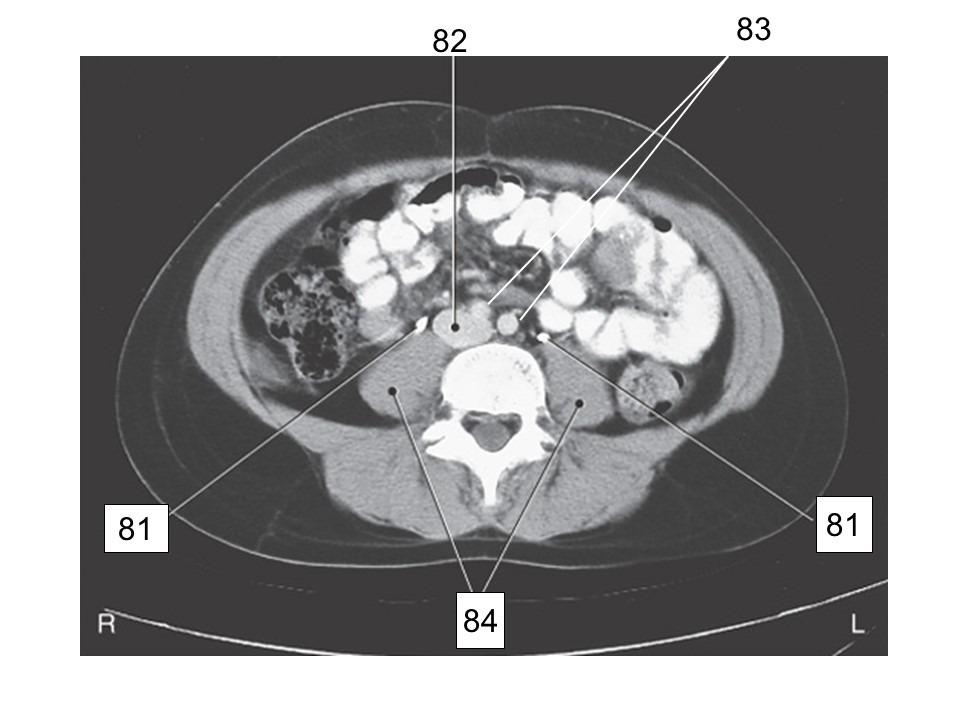
81
ureters
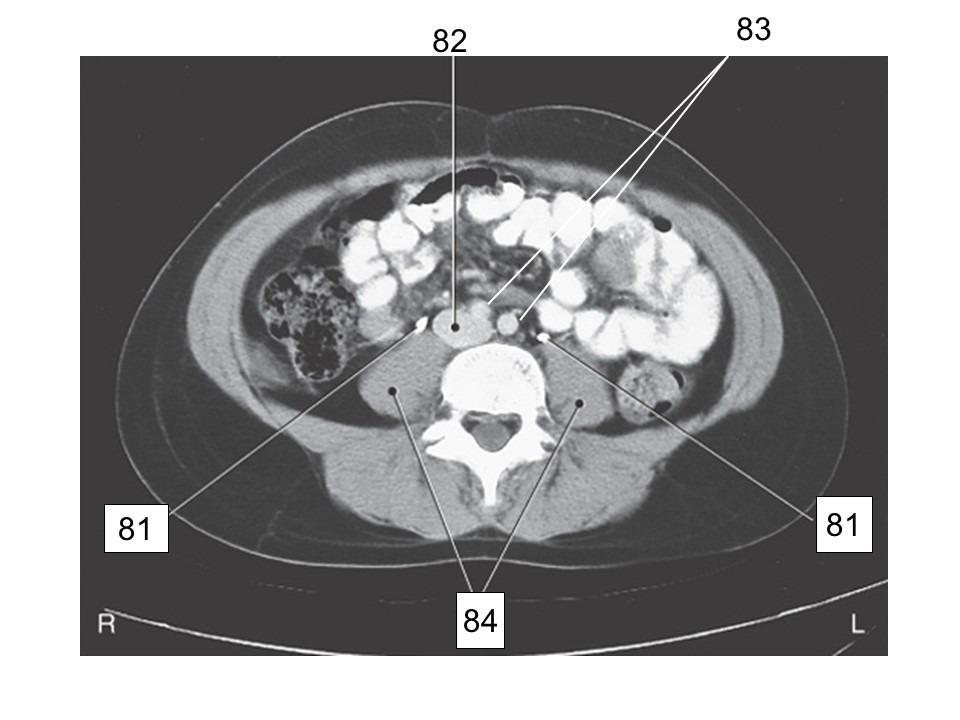
82
IVC
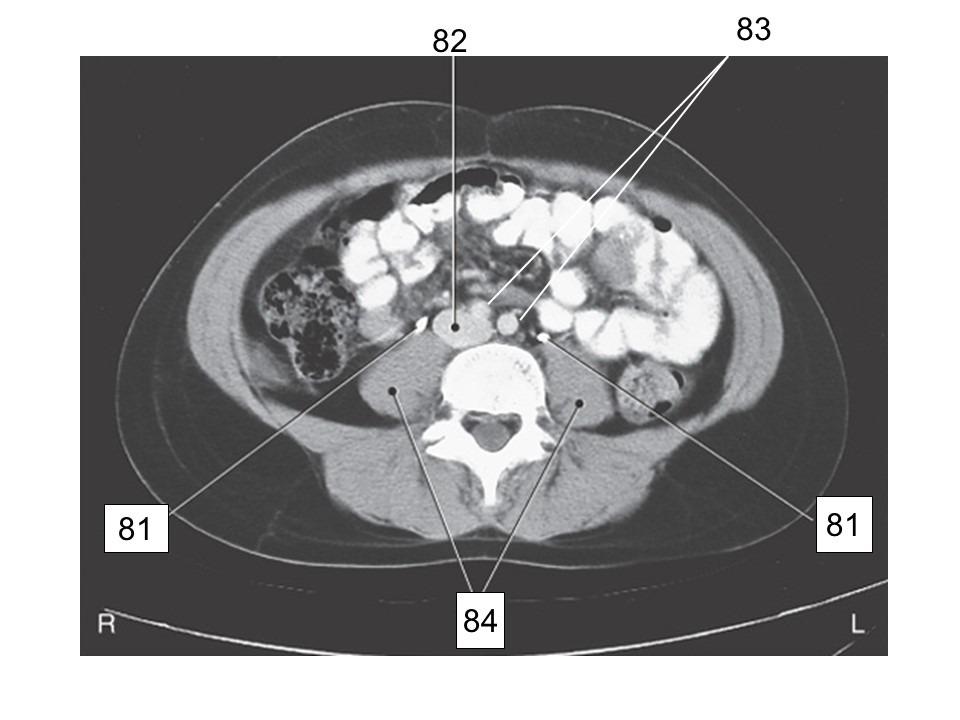
83
common iliac arteries
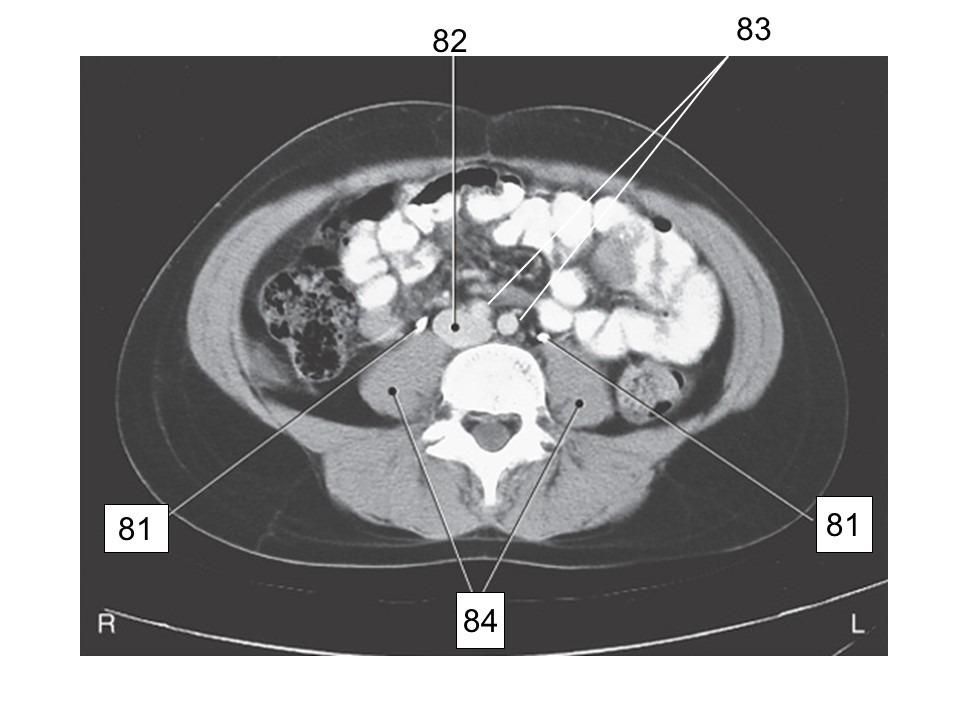
84
psoas muscle
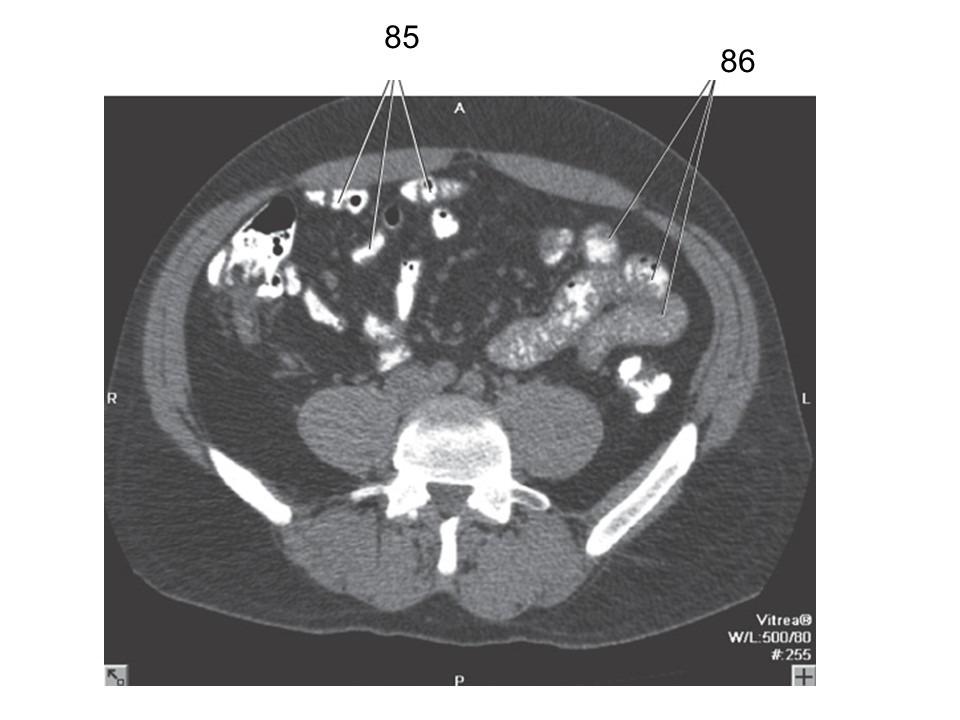
85
loops of ileum
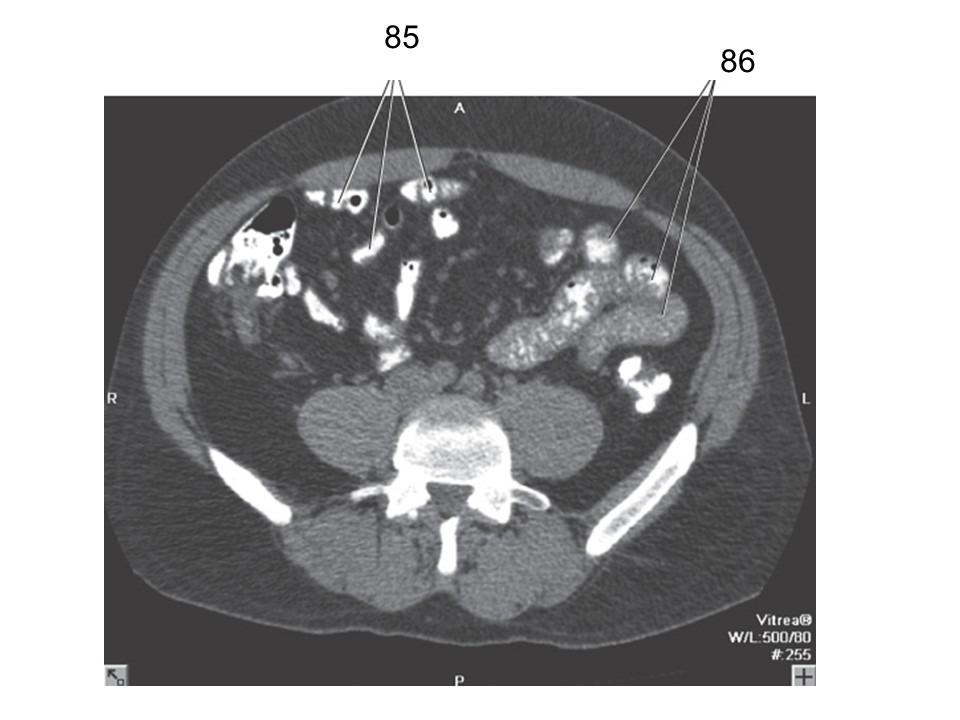
86
loops of jejunum
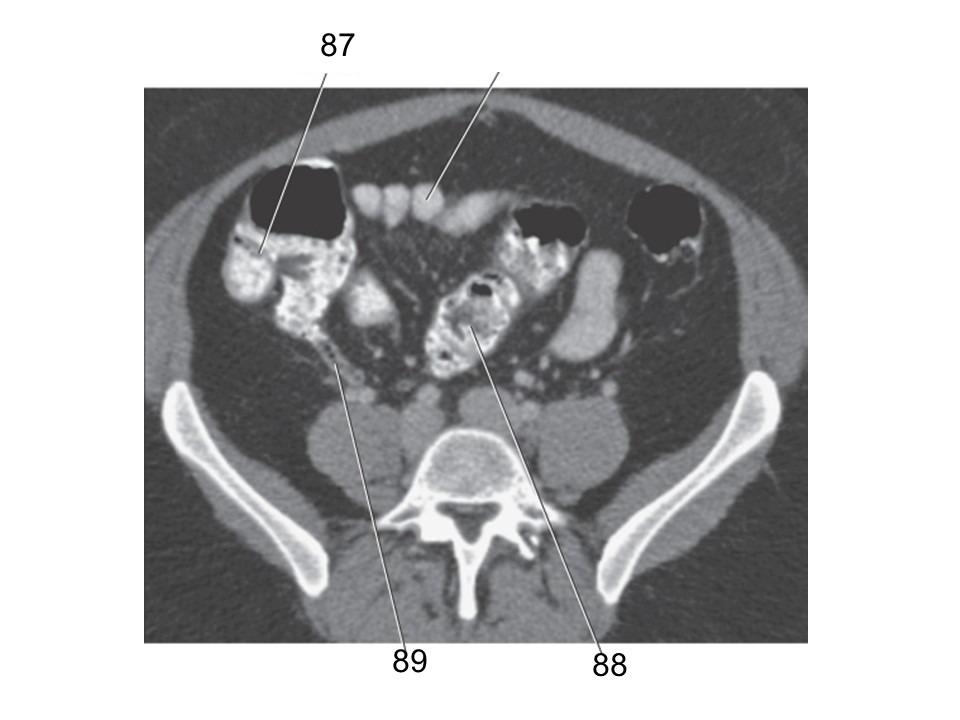
87
secum
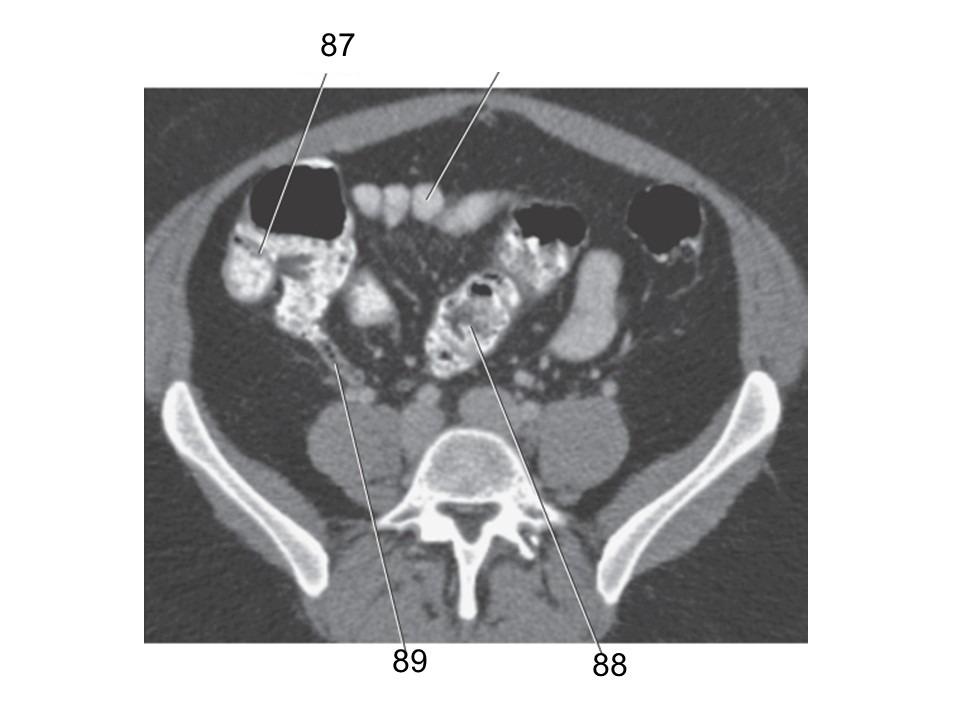
88
sigmoid colon
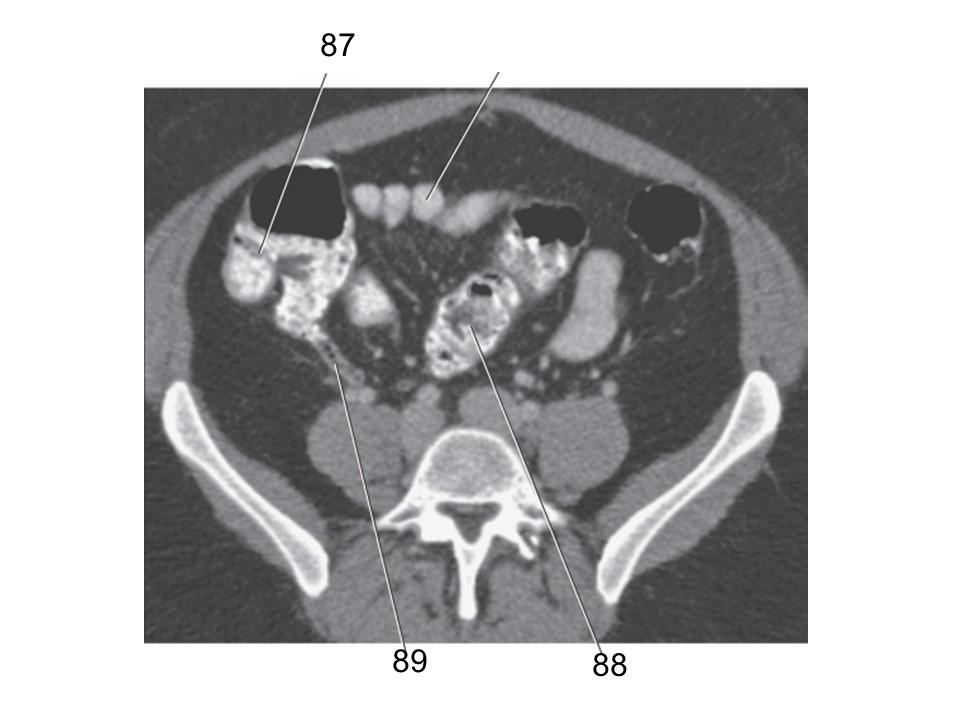
89
appendix
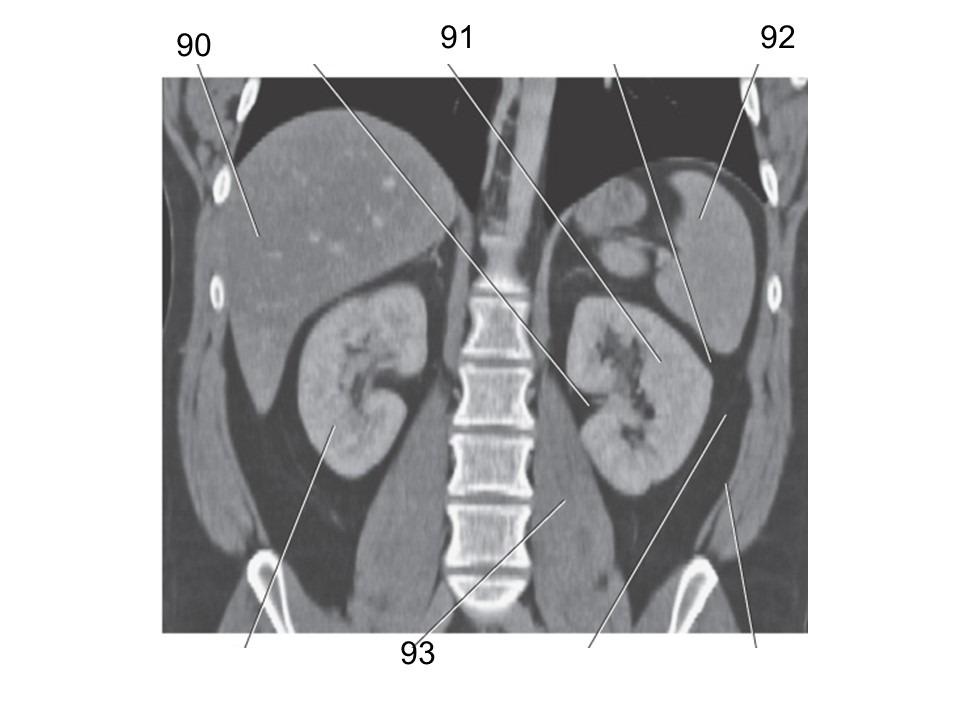
90
liver
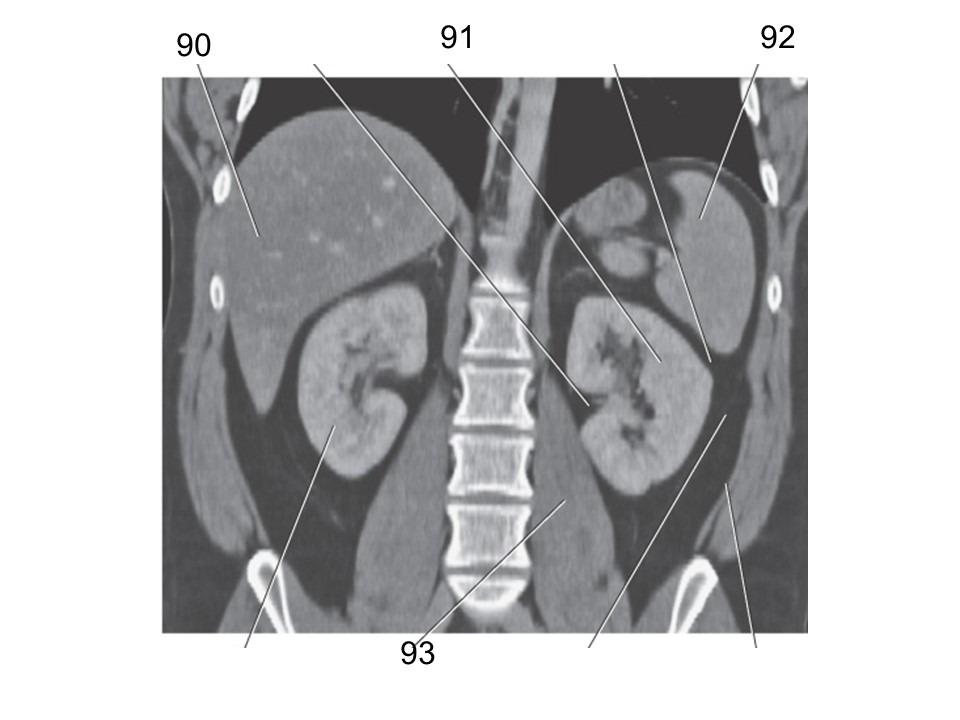
91
left kidney
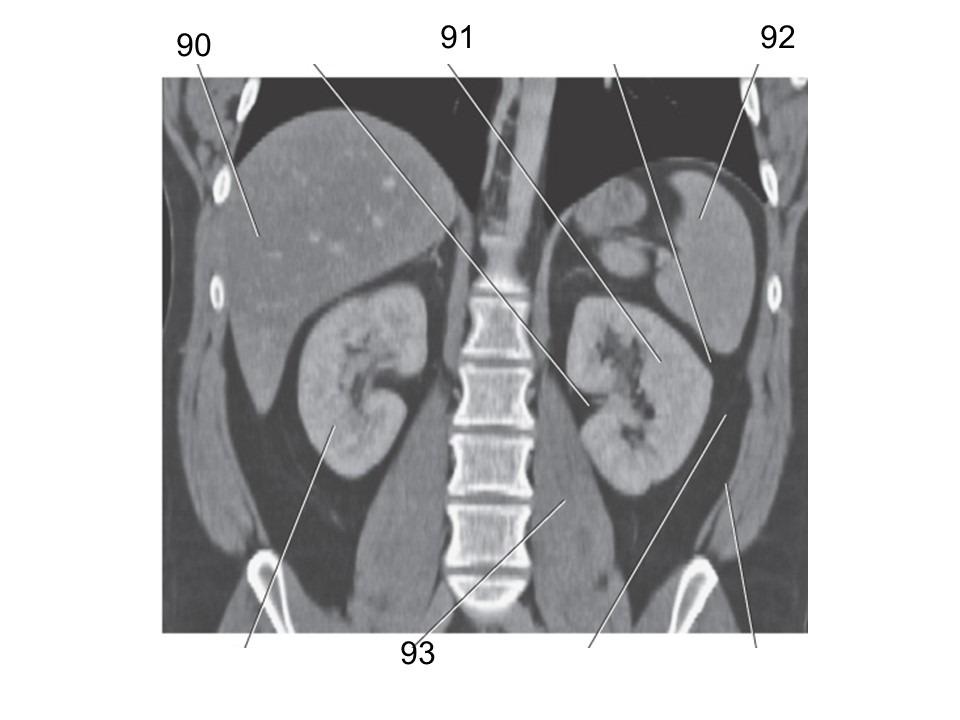
92
spleen
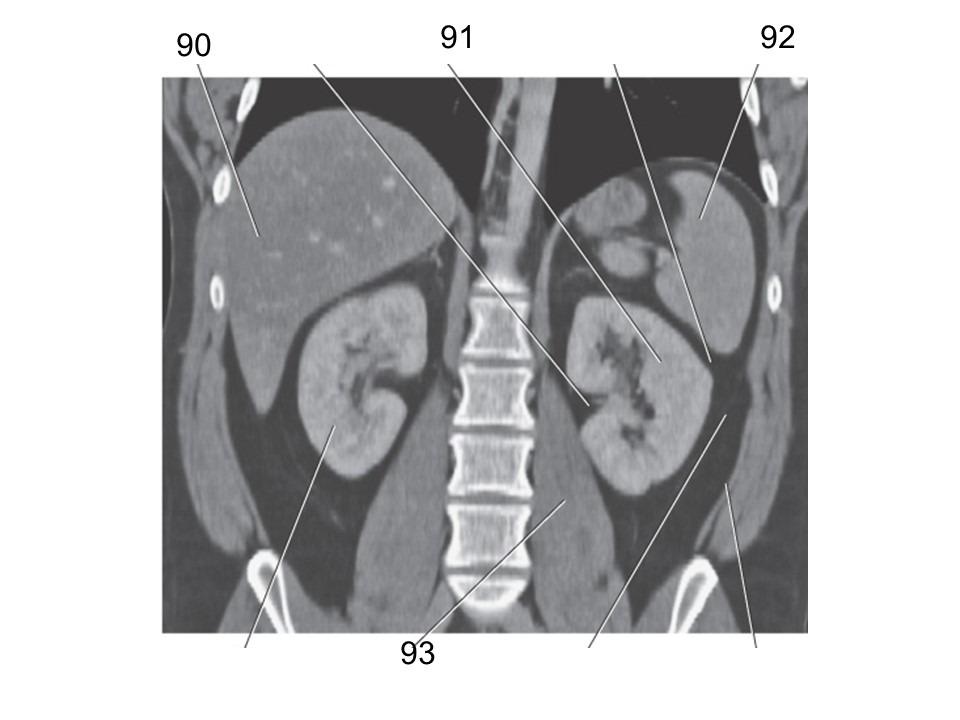
93
psoas muscle
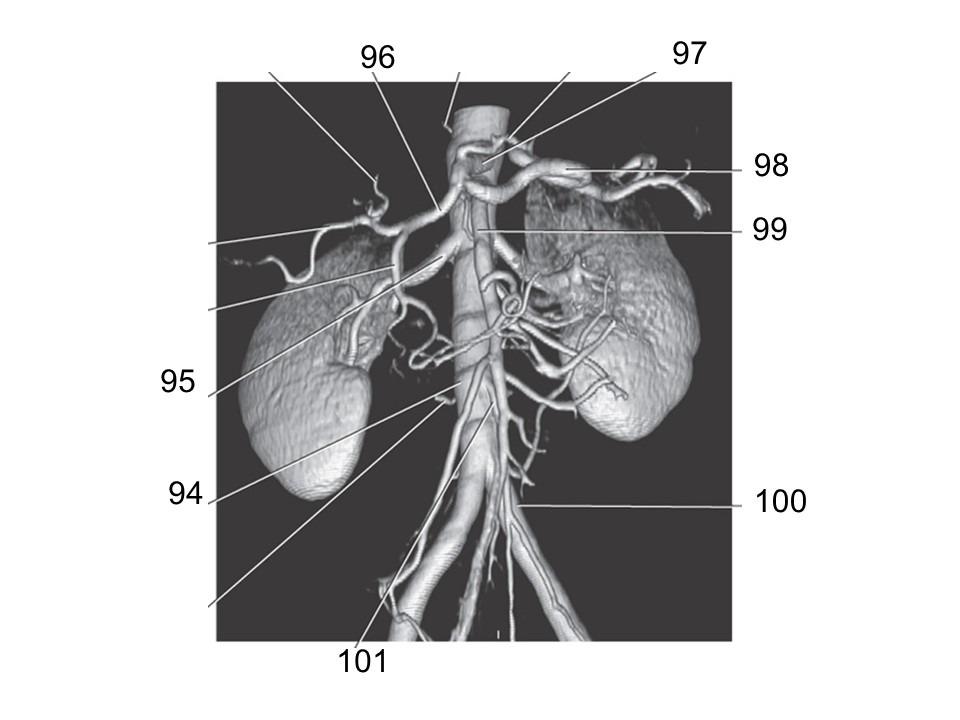
94
aorta
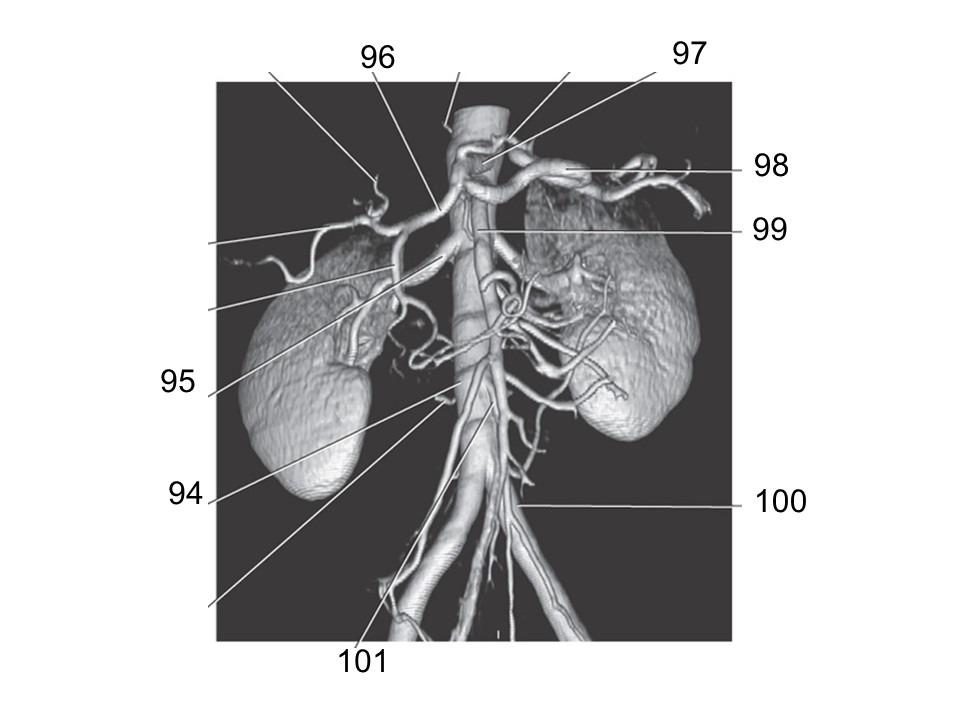
95
right renal artery